Dark exteriors paired with the honeyed warmth of cedar are no longer a niche experiment—they have become a defining trait of contemporary home design. Designers love how black paint or charred cladding makes cedar grain glow, while homeowners value cedar’s moisture-, insect-, and decay-resistance that keeps the contrast crisp for decades. The trend is more than aesthetics: cedar accepts finishes easily and supports robust rain-screen assemblies, and darker façades visually downsize large masses so homes nestle quietly into their sites. Ready to see the possibilities? Below are twenty standout ways to celebrate a black house with cedar accents.
1. Cedar-Framed Porch Welcomes Against Jet-Black Siding
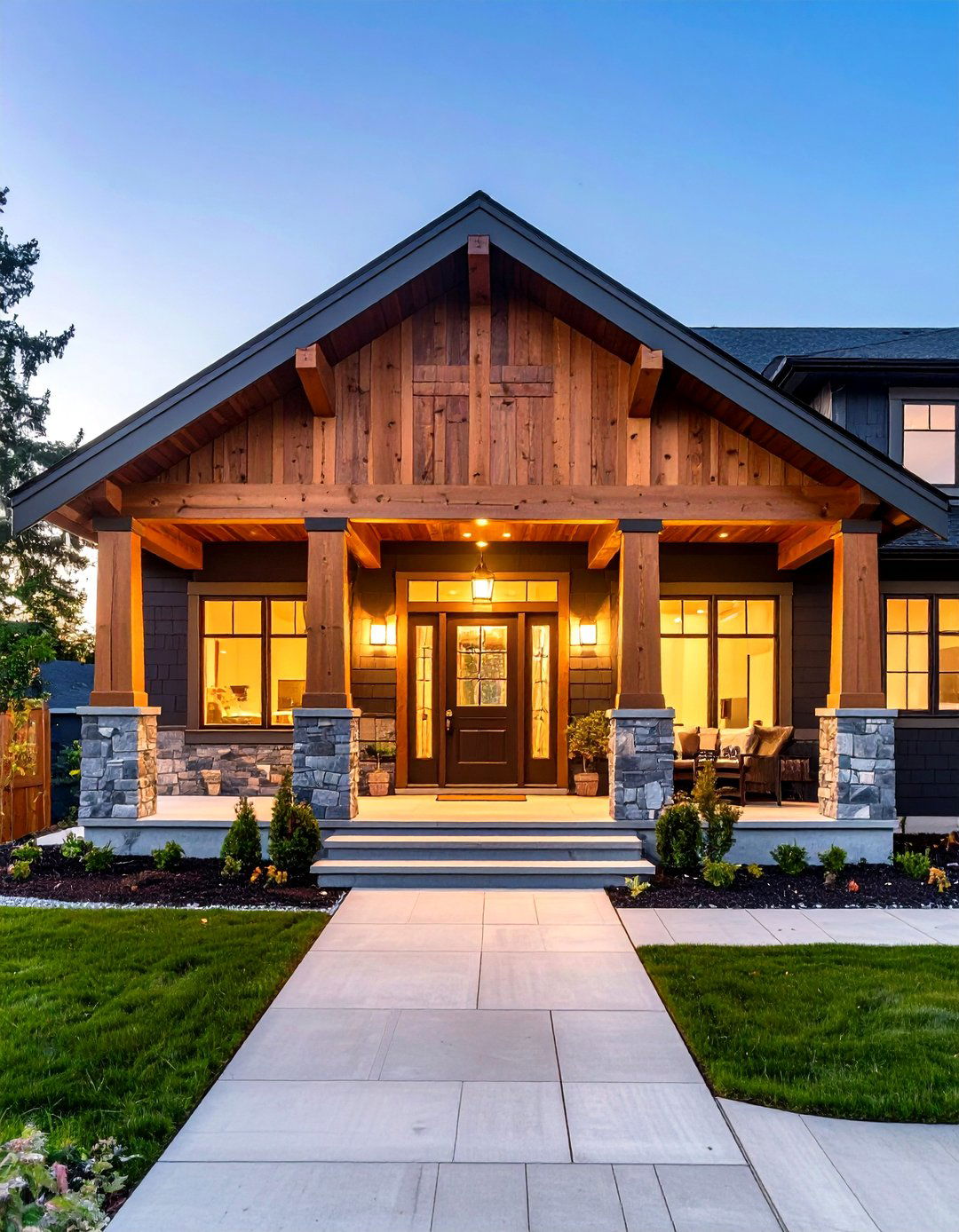
A sunlit front porch framed in clear-finished cedar can instantly soften a jet-black façade, guiding guests toward the entry while spotlighting the wood’s golden grain. Architects recommend continuing the cedar on soffits and porch ceiling to create a lantern effect after dark, because the warm hue reflects LED lighting with far less glare than painted boards. Choosing a tongue-and-groove profile hides fasteners and resists cupping, while cedar’s low density means boards expand minimally even in humid climates. For do-it-yourselfers, pre-finishing every edge on sawhorses seals the wood and extends that welcoming glow for decades. That little forethought keeps maintenance simple.
2. Cedar Entry Wall Adds Depth to Matte Black Cladding
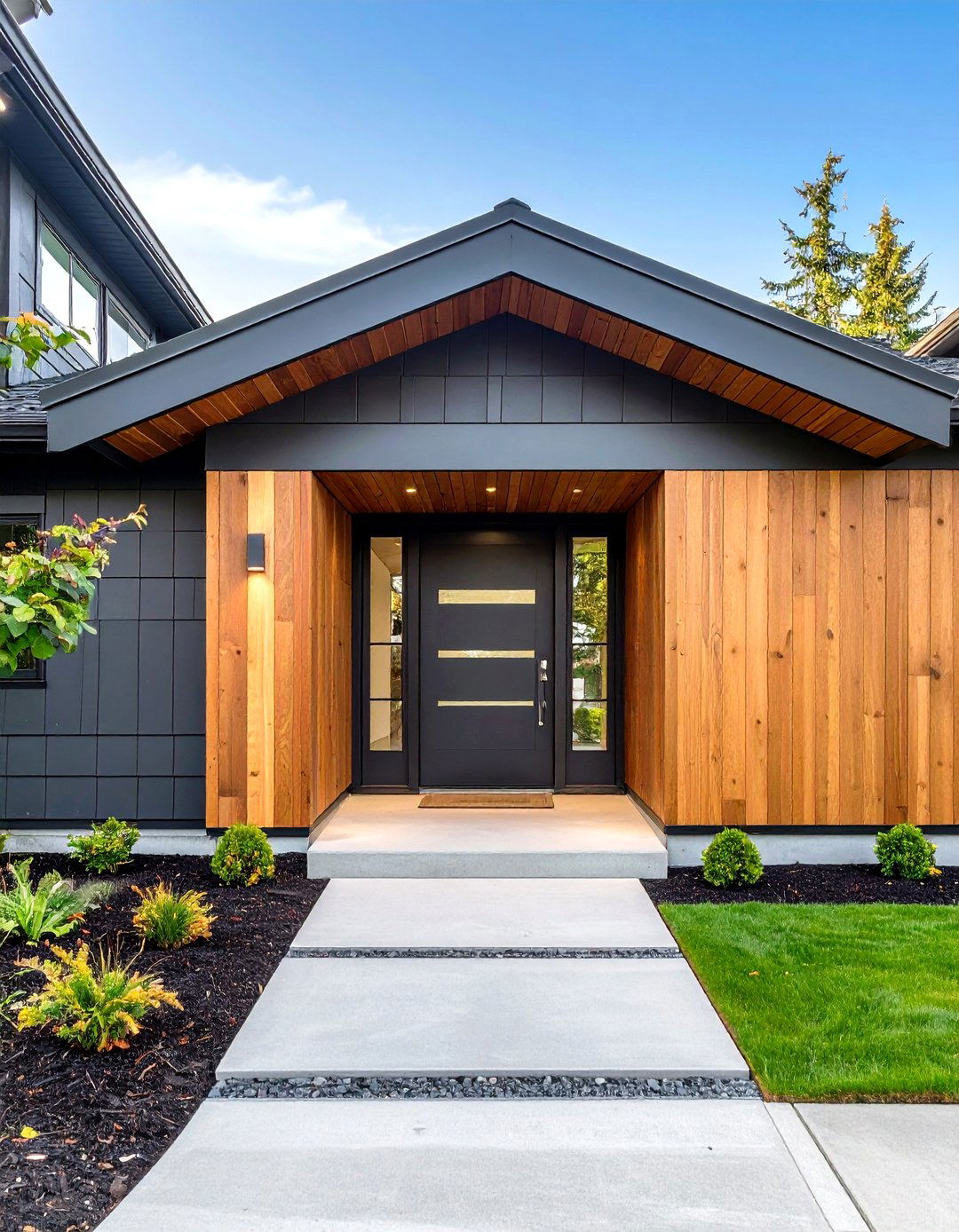
An entry wall of vertical cedar slats recessed under a deep roof plane creates cinematic depth against smooth matte black cladding. In Oregon’s Black Butte Lodge, designers used charred cedar volumes to “bookend” lighter cedar, drawing the eye inward and emphasizing the threshold. Borrow the tactic by staggering slats in alternating widths and spacing them ¼ in. apart to throw animated shadow lines. Clear oil keeps the hue honest, and cedar’s pitch-free surface embraces it without blotching. Add a recessed strip light at the sill to highlight texture and guide nighttime visitors for a touch of subtle drama.
3. Cedar Gable Trim Crowns the Shadowy Roofline
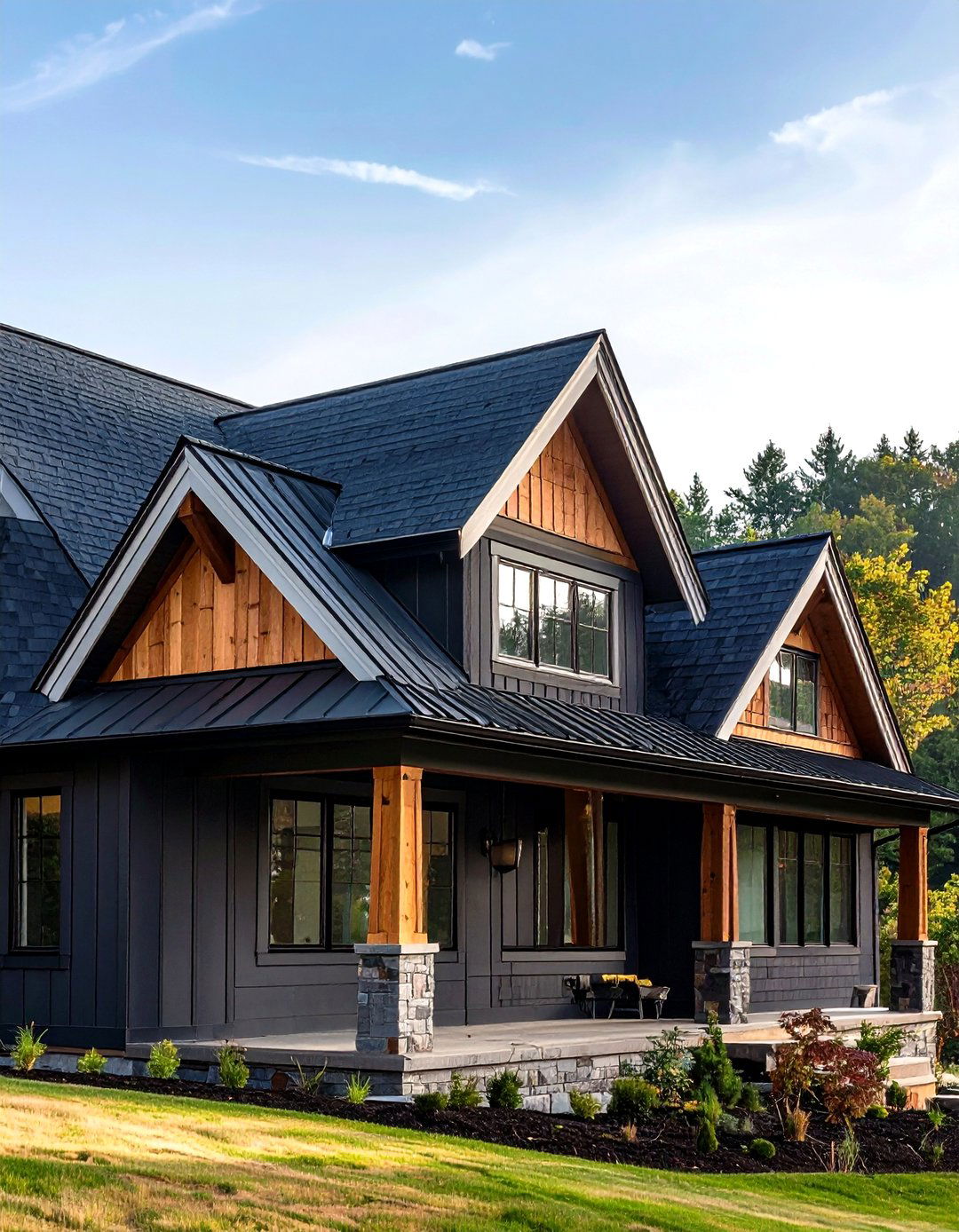
Unlike painted fascia, a slim band of cedar trim along a black gable peaks like a crown, catching afternoon sun and emphasizing roof geometry. Builders frequently choose 1×6 vertical-grain cedar because its straight fiber resists splitting at nail heads and accepts semi-transparent stains in a single coat. Align the trim flush with the cladding—this visually stretches rafters and reduces wind-driven water intrusion. Home-design writers praise the technique for adding texture without busy ornament, suiting minimalist farmhouses and cabins alike. Finish nails plus a clear UV-blocking sealant complete the understated crown.
4. Cedar Pergola Softens the Black Facade
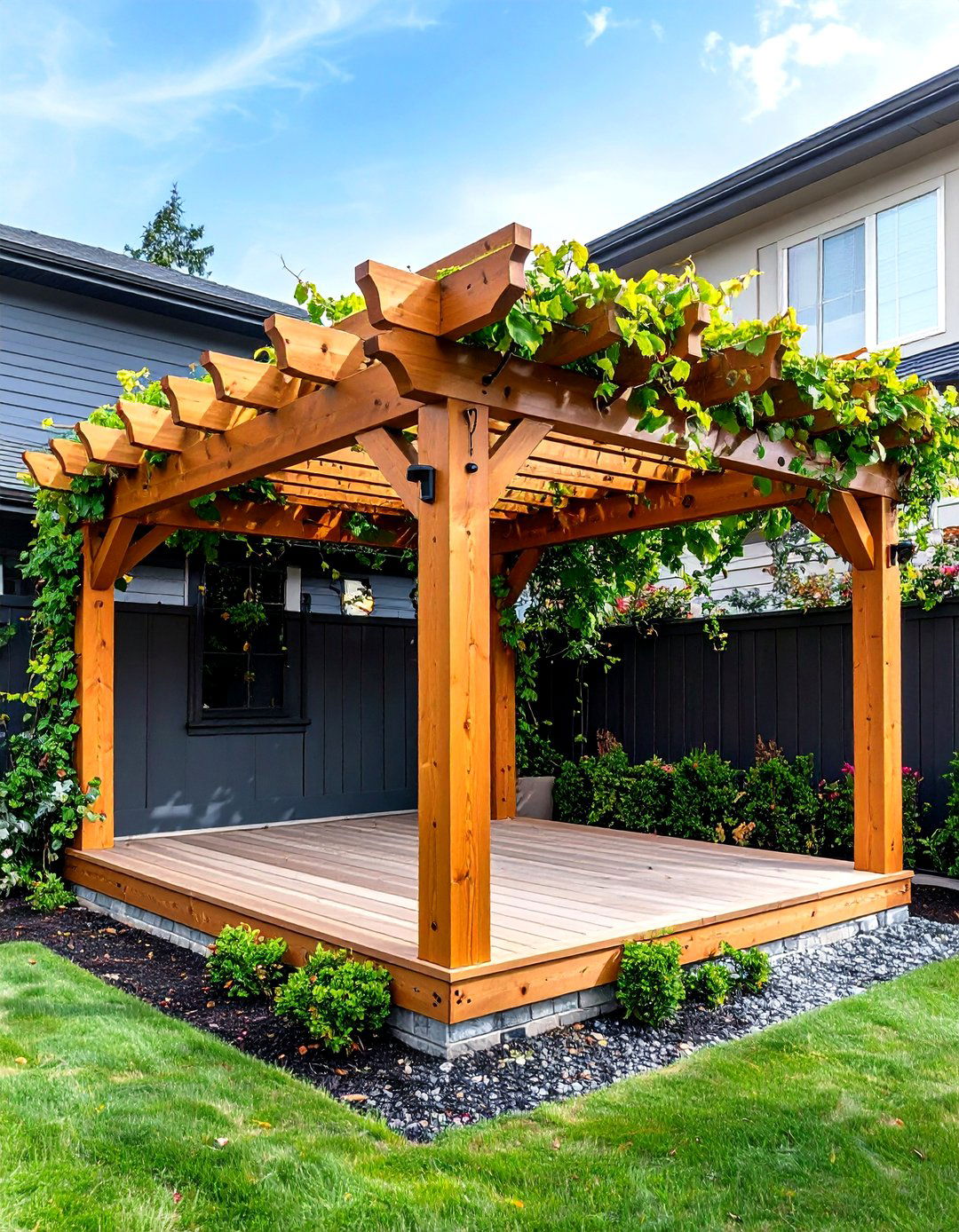
Take the edge off a monolithic black wall by floating a cedar pergola inches from the cladding. The overhead lattice filters harsh sun, reduces heat gain on dark paint, and frames an outdoor lounge in natural warmth. Stainless lag screws through stand-off brackets let moisture ventilate, and cedar’s inherent weather resistance keeps beams true without heavy stain schedules. An annual wash prevents mildew shadows, while deciduous vines boost summer shade and let winter light warm interior glazing.
5. Floating Cedar Deck Extends the Dark Envelope
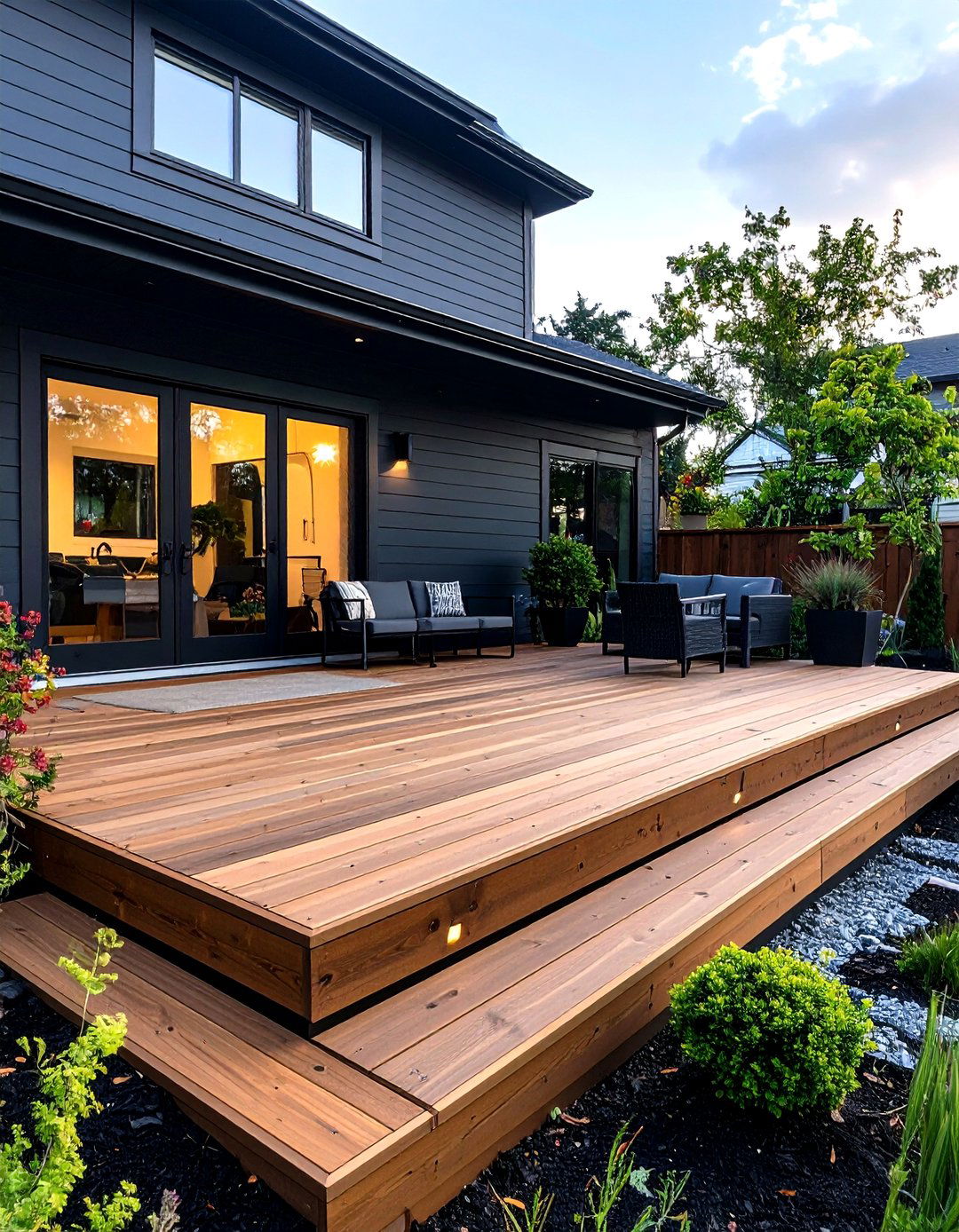
By running cedar horizontally as a floating deck, you visually stretch the black house outward and create a stage for everyday life. Designers leave a ⅛ in. shadow gap between deck and siding so the deck reads like a furniture insert, not an appendage. Cedar’s stability tolerates ground-level moisture, yet sealing the underside is wise where snow lingers. Hidden-fastener clips keep the surface clean and echo the minimalist cladding; low-glare step lights add safety and a subtle nighttime halo. This detail makes the transition from indoors to landscape feel effortless.
6. Vertical Cedar Battens Break Up Black Board-and-Batten

Board-and-batten siding painted shadow black can appear flat; swapping plywood battens for slender cedar staves introduces tactile relief and a golden pinstripe effect. New cladding studies highlight random batten widths—1×2, 1×3, 1×4—to avoid visual monotony. Cedar accepts both opaque paint and clear stain, so you can leave battens natural while recessed boards stay black for graceful weathering. Seal end grains and use twin stainless brads per batten to limit cupping. The alternating profiles also disrupt wind-driven rain, adding resilience.
7. Cedar Window Boxes Bring Living Color to the Dark Canvas
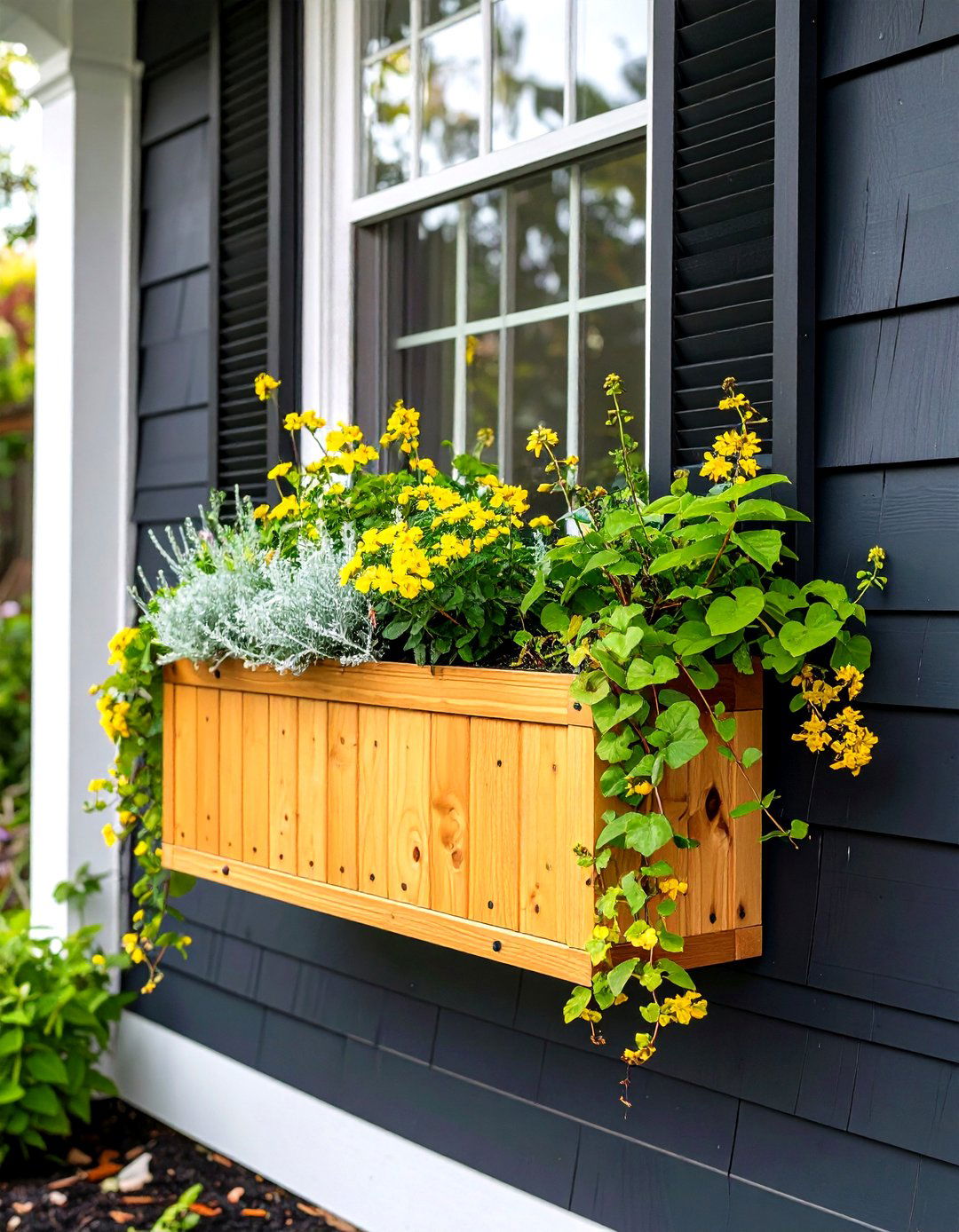
Window boxes built from knotty cedar add a pop of life against black lap siding, and cedar’s light weight spans wide windows without beefy brackets. Drill drainage holes and seal surfaces with breathable oil to keep soil moisture from staining the wall. Cedar’s oils discourage rot, so boxes stay sturdy despite splashy watering schedules, and stainless lag bolts secure them to studs. Fill with trailing sweet-potato vine or silver artemisia—green foliage glows against dark paint. Swap plantings seasonally to keep that vibrancy fresh.
8. Cedar Garage Door Becomes a Sculptural Focal Point
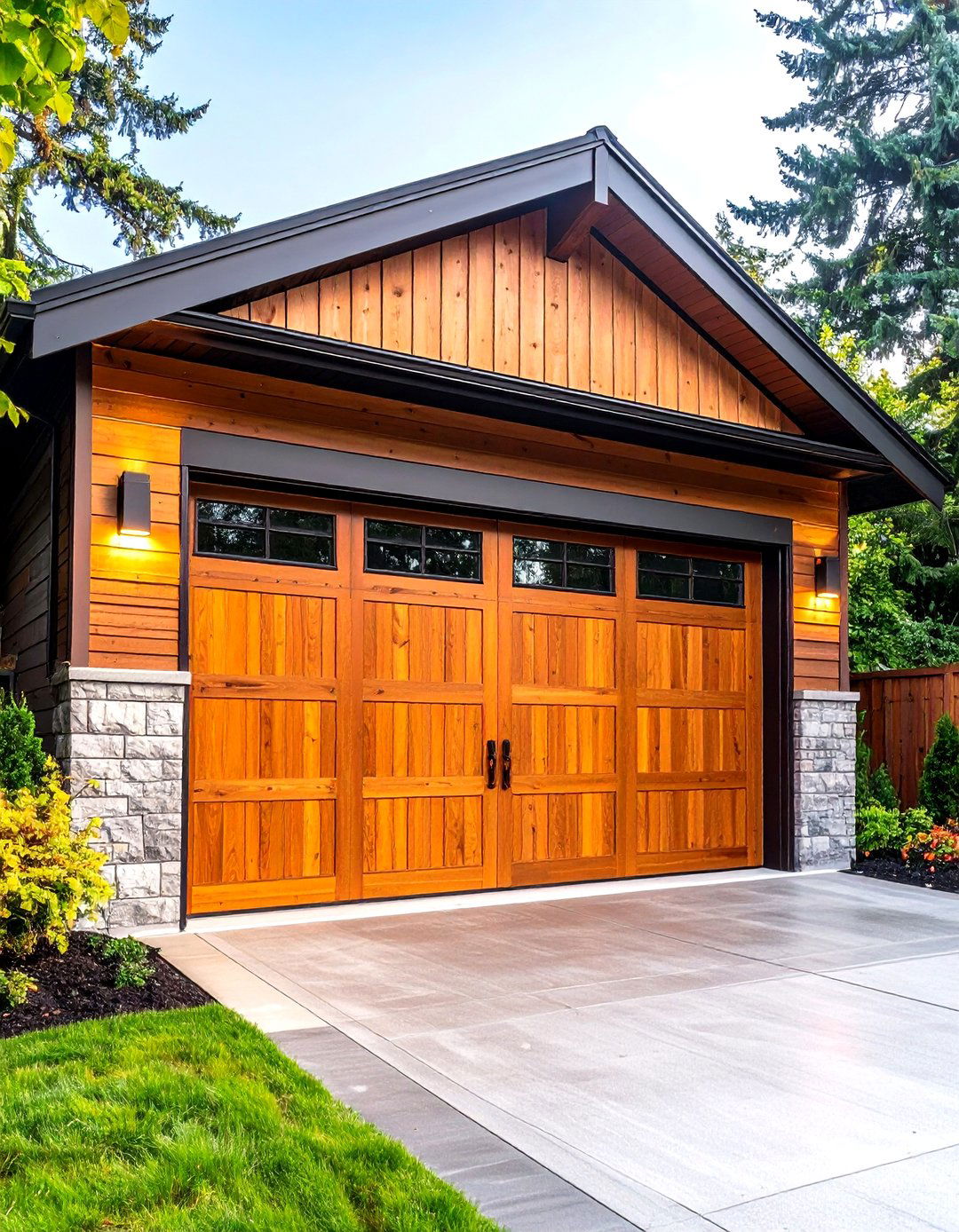
A flush cedar plank garage door instantly elevates a black house with cedar accents, turning a utilitarian opening into a sculptural panel. Industry data shows vertical-grain cedar laminated onto insulated cores weighs less than steel yet offers similar R-values, easing opener strain. Match plank spacing to adjacent siding so the door disappears when shut, and use clear UV blockers to prevent yellowing. Cedar’s dimensional stability resists bowing across wide spans. Recess a slim LED band along the jamb to outline the door each evening.
9. Glowing Cedar Soffits Under Black Eaves
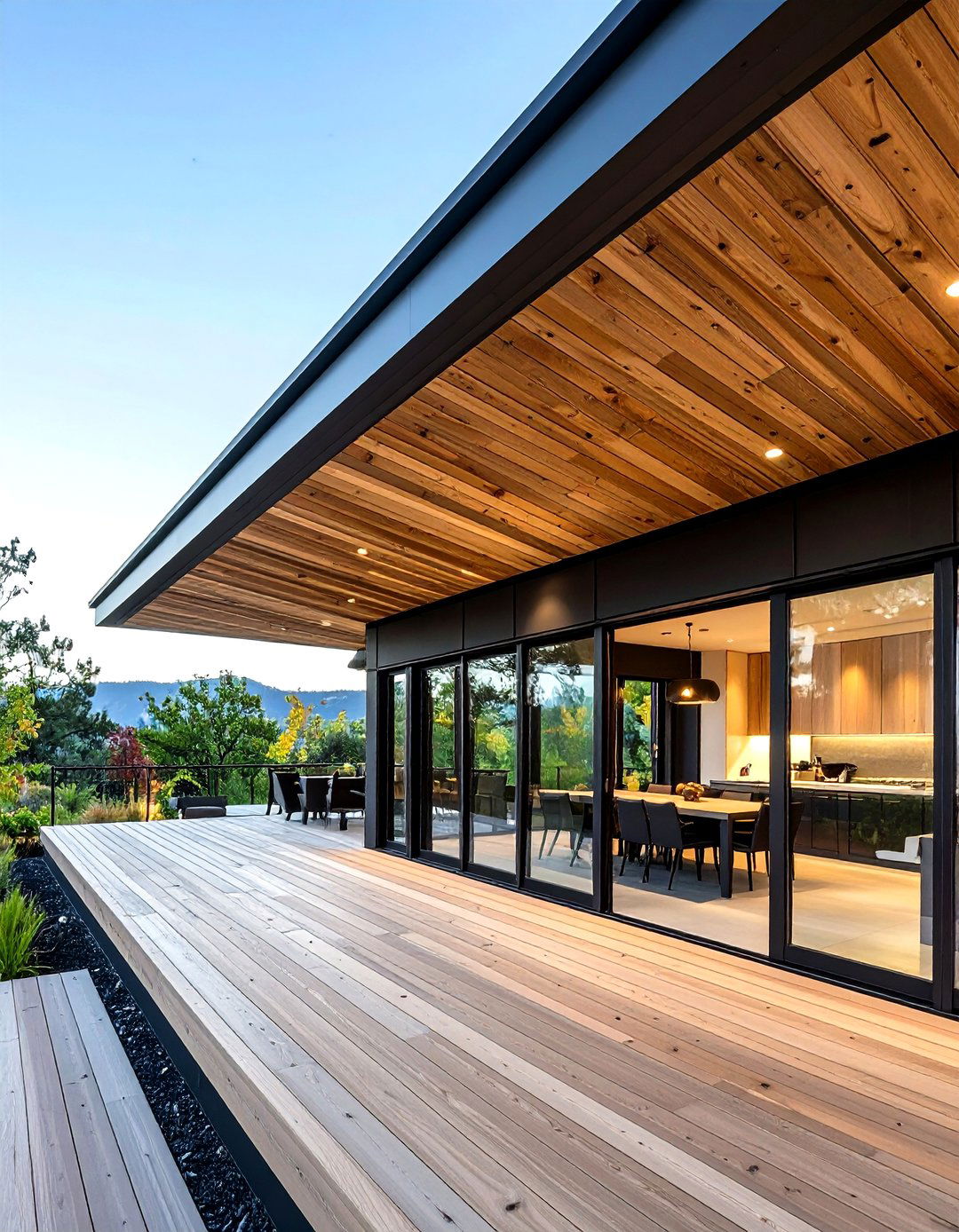
The underside of a roof often disappears on dark houses, but cedar tongue-and-groove eaves become glowing picture frames after sunset. Cedar lacks pitch, accepting light stains that bounce warm lumens onto walkways without extra fixtures. Run boards perpendicular to the fascia so the eye reads depth; case studies note natural soffits also shield fascia paint by reducing UV splash-back. A yearly soap-and-water wipe keeps cobwebs at bay, and even small homes gain a boutique-hotel vibe.
10. Cedar Columns Frame the Midnight Front Door
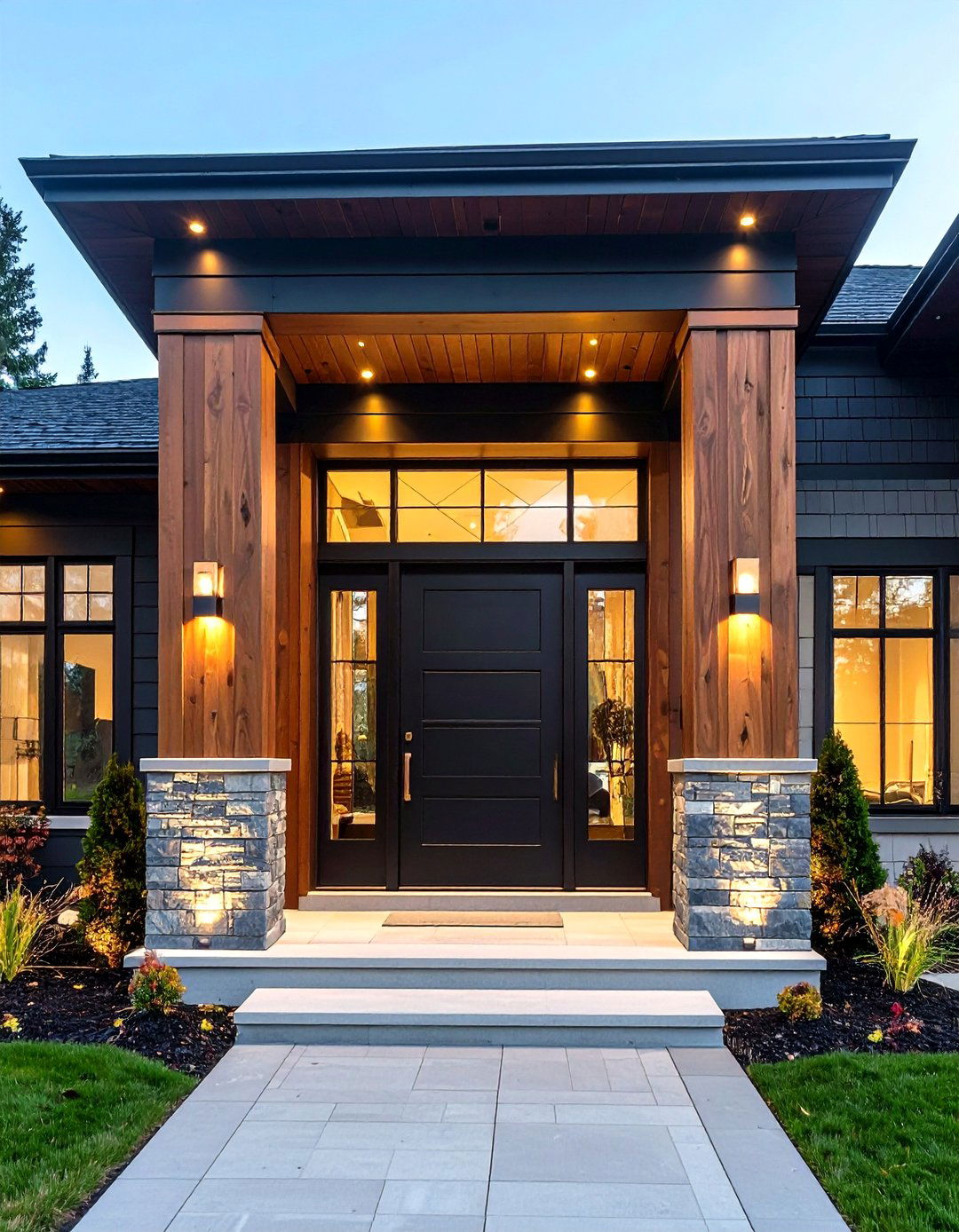
Cedar-wrapped columns flanking a black door add tactile warmth where guests pause, and cedar’s insect resistance keeps bases sound without metal flashings. Carpenters build three-sided boxes over structural posts and pre-finish all interior faces to deter hidden rot. Cedar’s low shrinkage keeps miters tight through seasonal swings, and a satin marine varnish sheds dust. Copper hardware picks up cedar’s undertones while contrasting the deep black paint. Visitors feel the invitation before they step inside.
11. Cedar Privacy Screens Complement Black Patio Walls
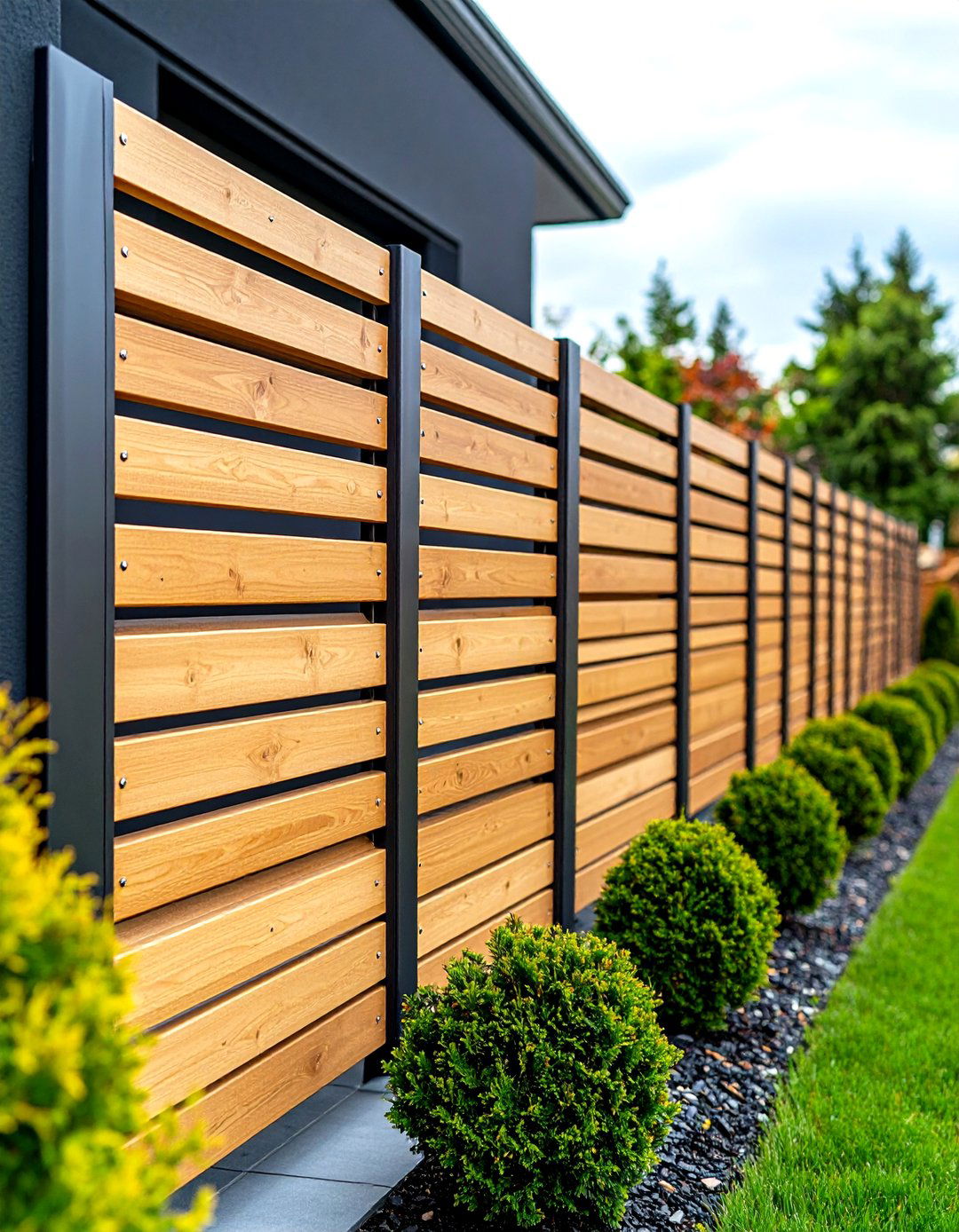
For backyard lounging, louvered cedar screens against black stucco deliver seclusion without claustrophobia. Angling 2×4 slats at 45° blocks views yet lets breezes pass. The rhythmic cedar pattern bounces warm light and counters heat absorbed by the wall; homeowners report up to 10 °F cooler surfaces when shade and airflow combine. Stainless screws and breathable oil keep the screen low-maintenance, and climbing jasmine adds scent without hiding the cedar.
12. Mixed Cedar and Shou Sugi Ban Boards Create Layered Drama
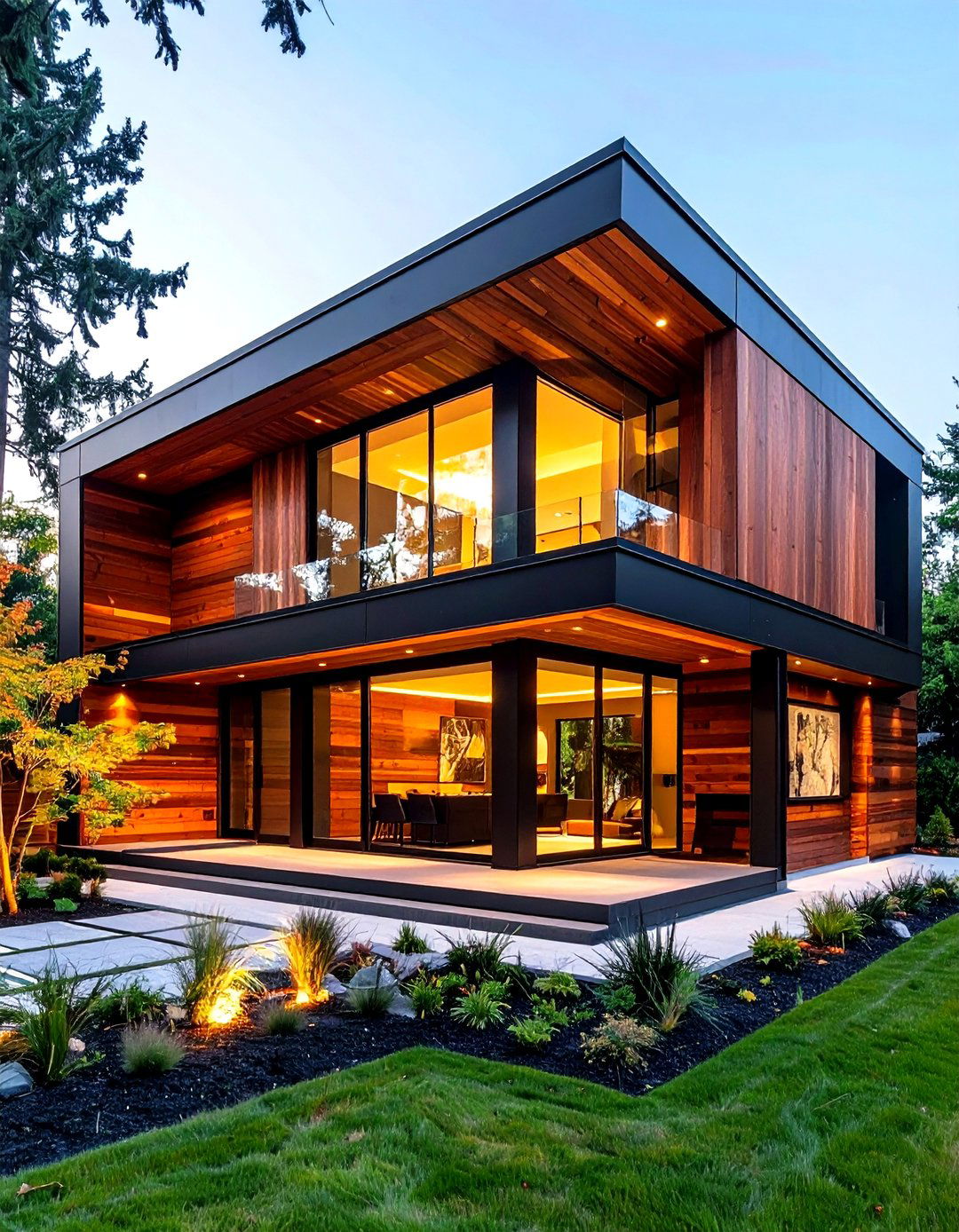
Layering natural cedar with Shou Sugi Ban boards delivers triple contrast of color, sheen, and texture. At Black Butte Lodge, charred modules recede while lighter boards advance, sculpting the mass. Pre-charred planks gain surface hardness and bug resistance, extending maintenance cycles. Include a horizontal break at floor level for movement joints, and mist boards before cutting to keep soot down; edges sear cleanly.
13. Cedar Under-Deck Ceiling Warms a Two-Story Black Home
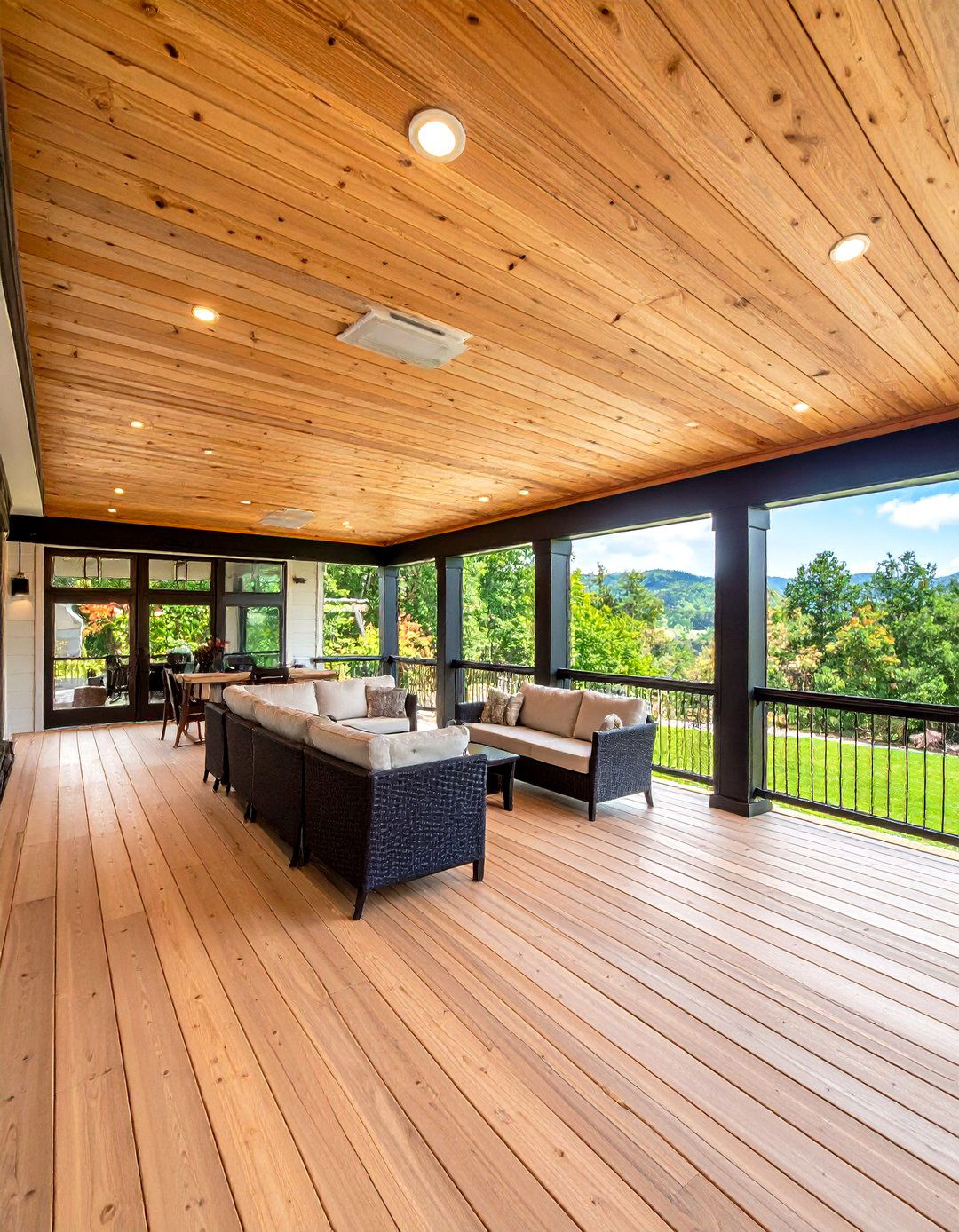
On tall black homes, deck undersides can feel cave-like; lining them with cedar tongue-and-groove transforms them into cozy outdoor rooms. Cedar spans 16-in. joists without sagging, saving furring labor. Install hidden vents near the house wall to expel humidity, and clean ceilings twice a year with a soft brush, re-oiling every three years. Low-profile puck lights add evening ambiance. This lounge quickly becomes the household’s favorite rain-day retreat.
14. Overhanging Cedar Balcony Animates a Black Cube House
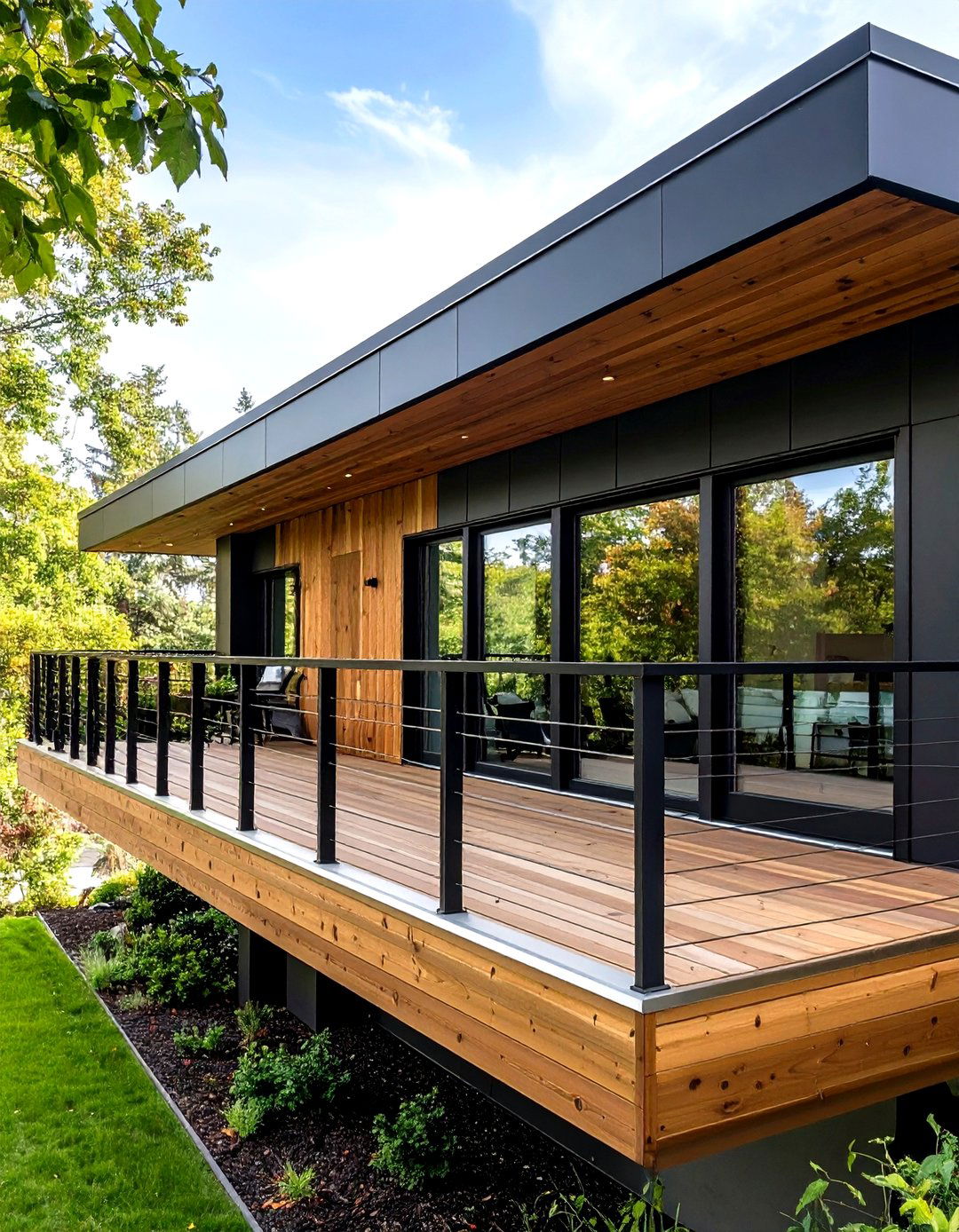
Cantilever a cedar-clad balcony beyond the black wall; the projecting volume casts dynamic shadows and shelters a patio beneath. Laminated cedar panels have lower thermal conductivity than metal, keeping balcony floors pleasant barefoot. Back-prime panels, slope surfaces, and add stainless drip edges for longevity. Cedar’s stability keeps crisp edges true year-round. Inside, floor-to-ceiling sliders align with the cedar box, linking interior and exterior. The result is a striking but livable silhouette.
15. Cedar Shutters Animate a Modern Black Farmhouse
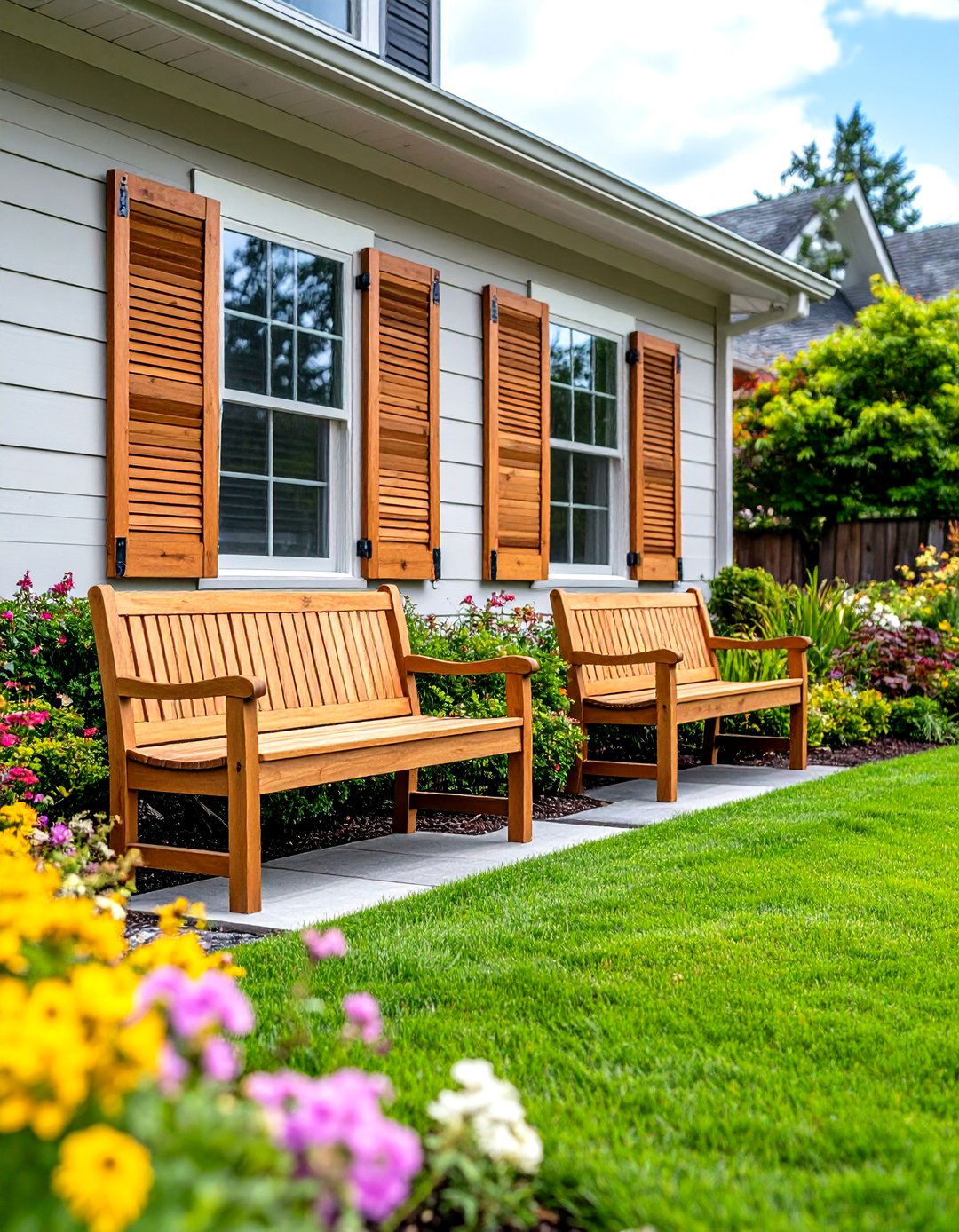
Operational cedar board shutters enrich a modern black farmhouse with texture and climate control. Mount them on stainless guitar hinges so they swing flat, becoming sculptural wings. Cedar’s low weight eases movement, and transparent stains set them apart from the siding. Closing shutters on sweltering days cuts interior solar gain—helpful when a dark façade absorbs extra heat. Seasonal use prolongs finish life and deepens the narrative.
16. Cedar Fencing Extends the Black-and-Wood Palette into the Landscape
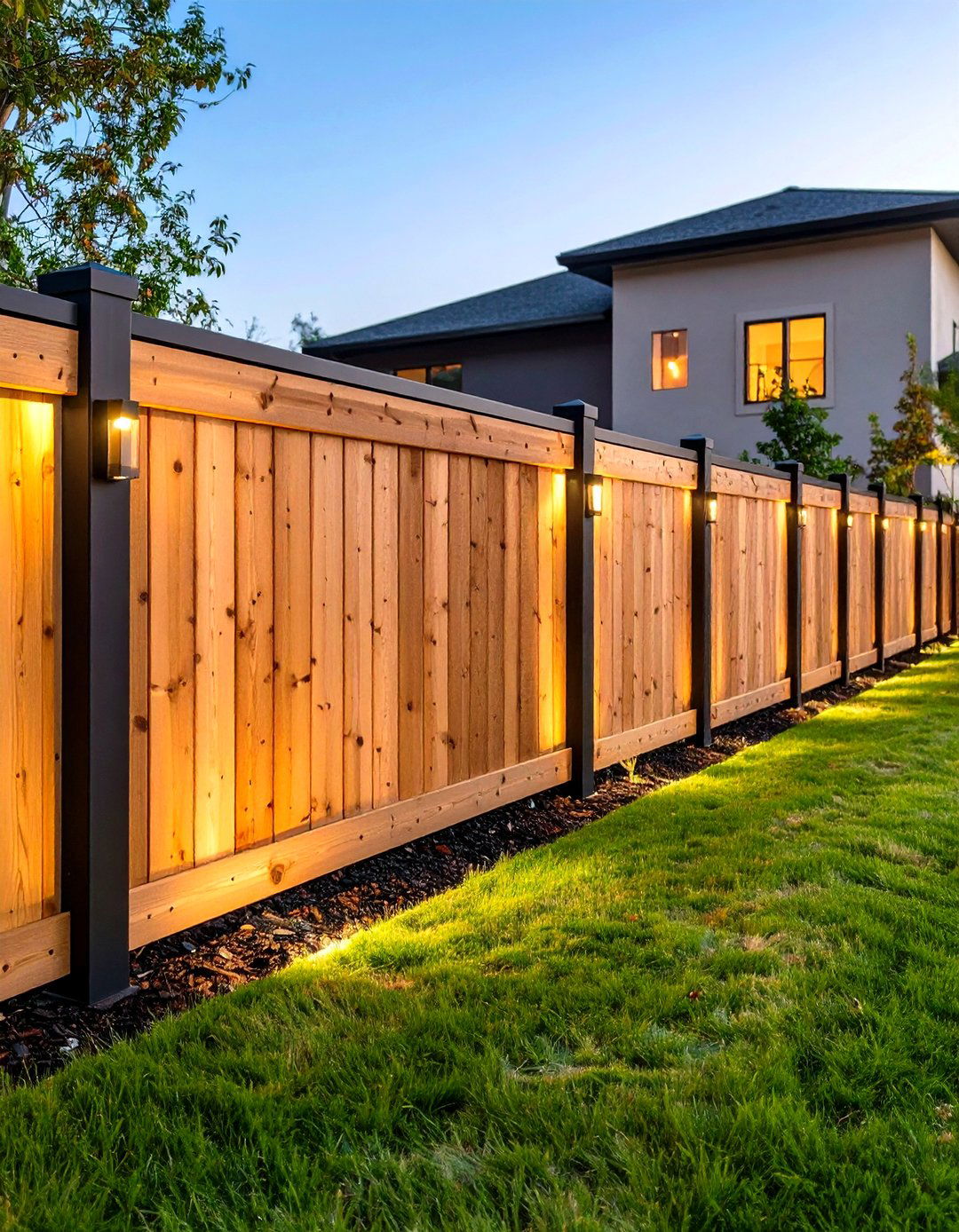
A horizontal cedar fence on black steel posts unifies house and yard. Stagger 1×6 boards with slim gaps so the wood seems to float between shadow lines. Cedar’s weather resistance keeps the fence silvering gracefully rather than warping. Repeat black on gate frames and cap rails, and hide a steel channel in the top rail for rigidity. Landscape lighting set low highlights the fence at dusk.
17. Cedar Portico Warms a Black Stone Base
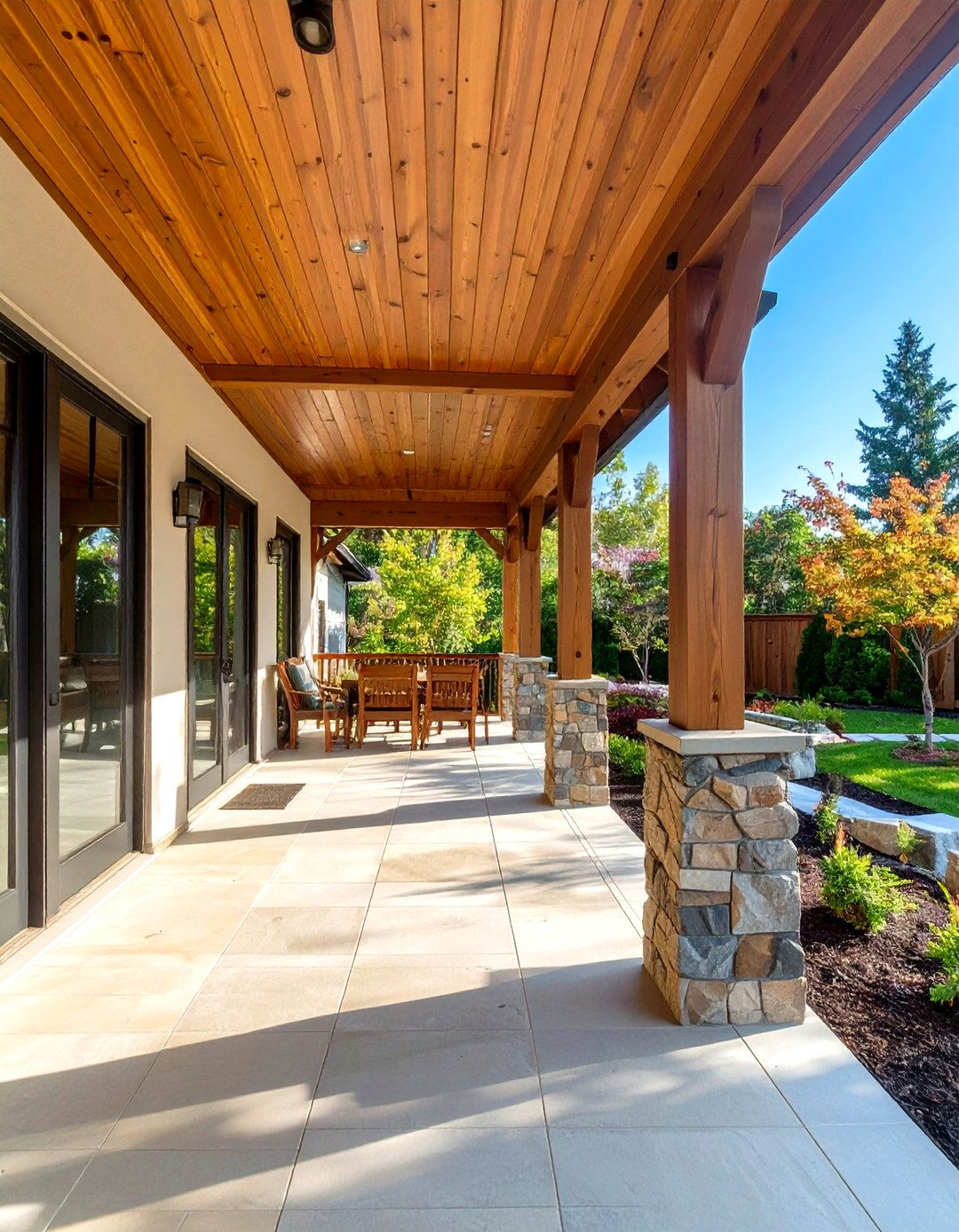
When a stone-clad base feels fortress-like, a cedar portico brings warmth and human scale. Frame a timber A-frame before the entry and infill the ceiling with narrow boards so sunlight filters gently. Cedar’s tonal variation pairs with stone veining, and its low density avoids overloading footings. A semi-transparent stain every four years shields against UV reflected off light stone, while checks on hidden hangers keep it sound. Visitors sense a balanced blend of rustic and modern.
18. Cedar Accent Wall Highlights a Black Barndominium
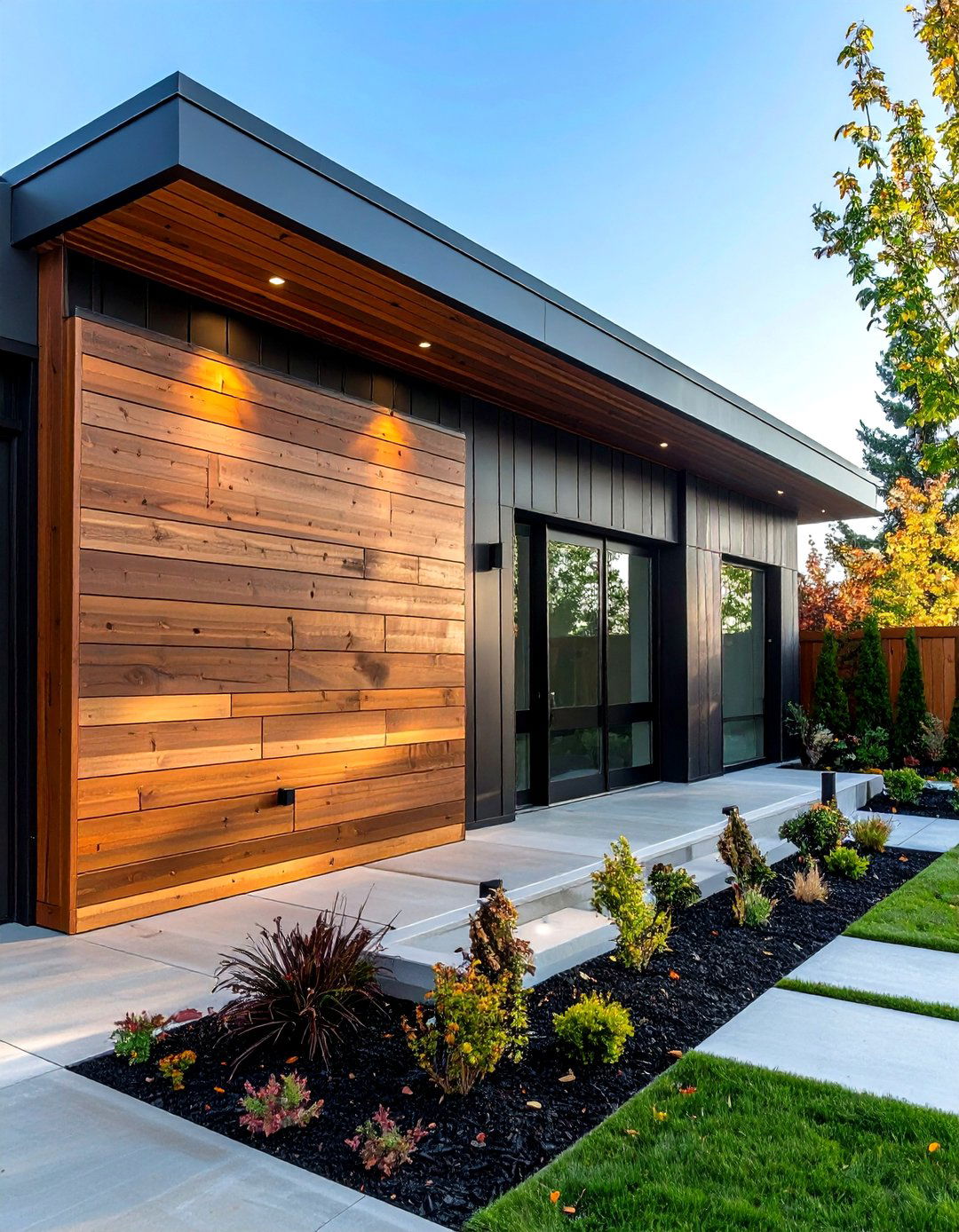
Expansive black metal siding can read industrial; a full-height cedar accent wall around living-room windows adds warmth without diluting the edge. Install over horizontal furring to create a rainscreen and float the cedar proud of the metal. Alternate grain patterns for liveliness, and use concealed screw clips for quiet expansion. Cedar’s moisture resistance proves itself even on farmsteads where sprinklers and livestock raise humidity. Nighttime up-lighting turns the wall into a glowing beacon.
19. Cedar Trim Outlines Black Windows with Crisp Geometry
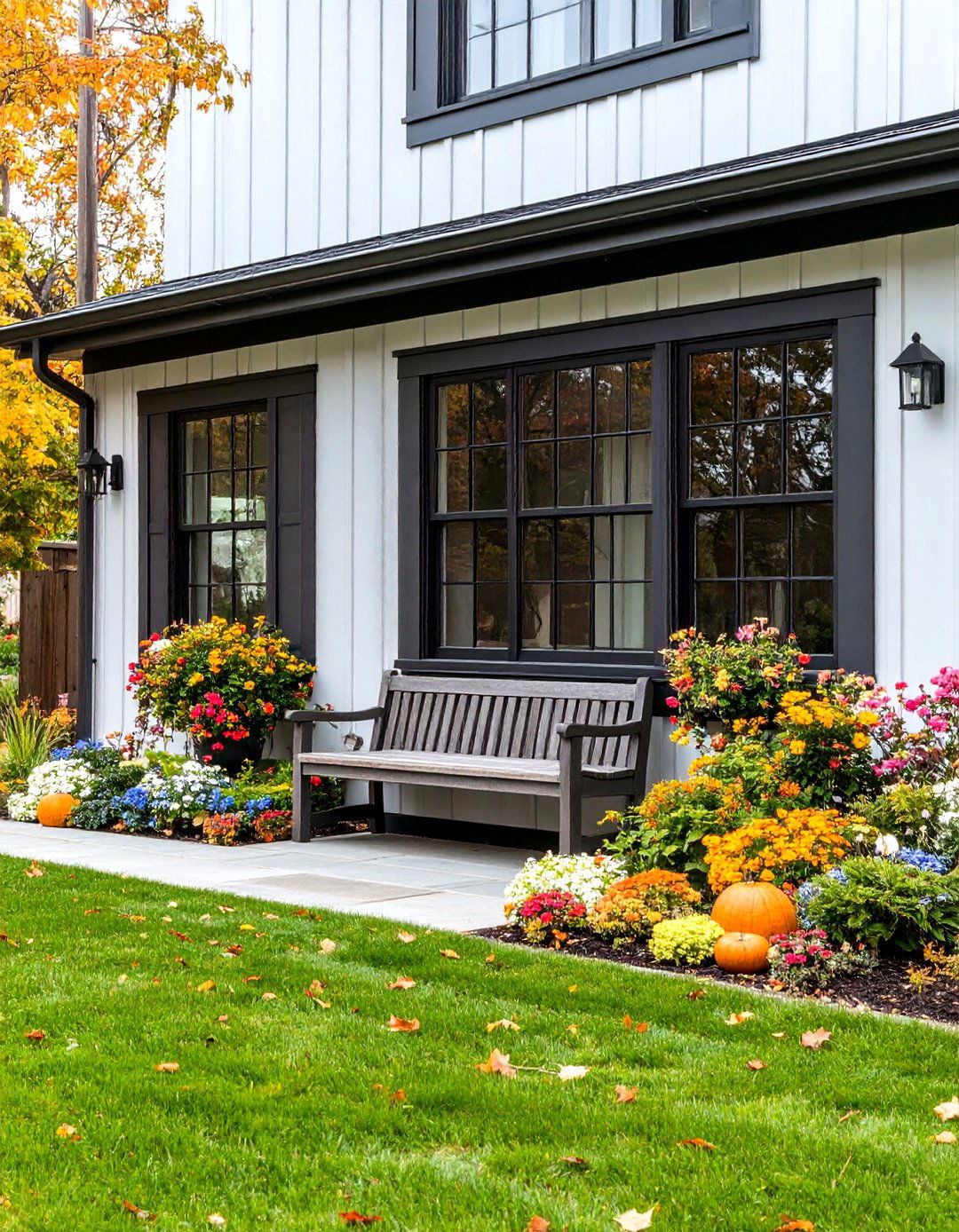
Black windows can fade into dark walls; 1×4 cedar trim restores crisp geometry and spotlights glazing rhythm. Back-prime trim with breathable paint, then clear-oil the face so the wood glows like a picture frame. Install thin metal Z-flashing behind the head trim for hidden weather protection. Energy specialists note that tight trim gaps sealed with high-performance tape can improve airtightness and offset some cooling load from a dark façade.
20. Cedar Landscape Elements Tie the Home to Its Site
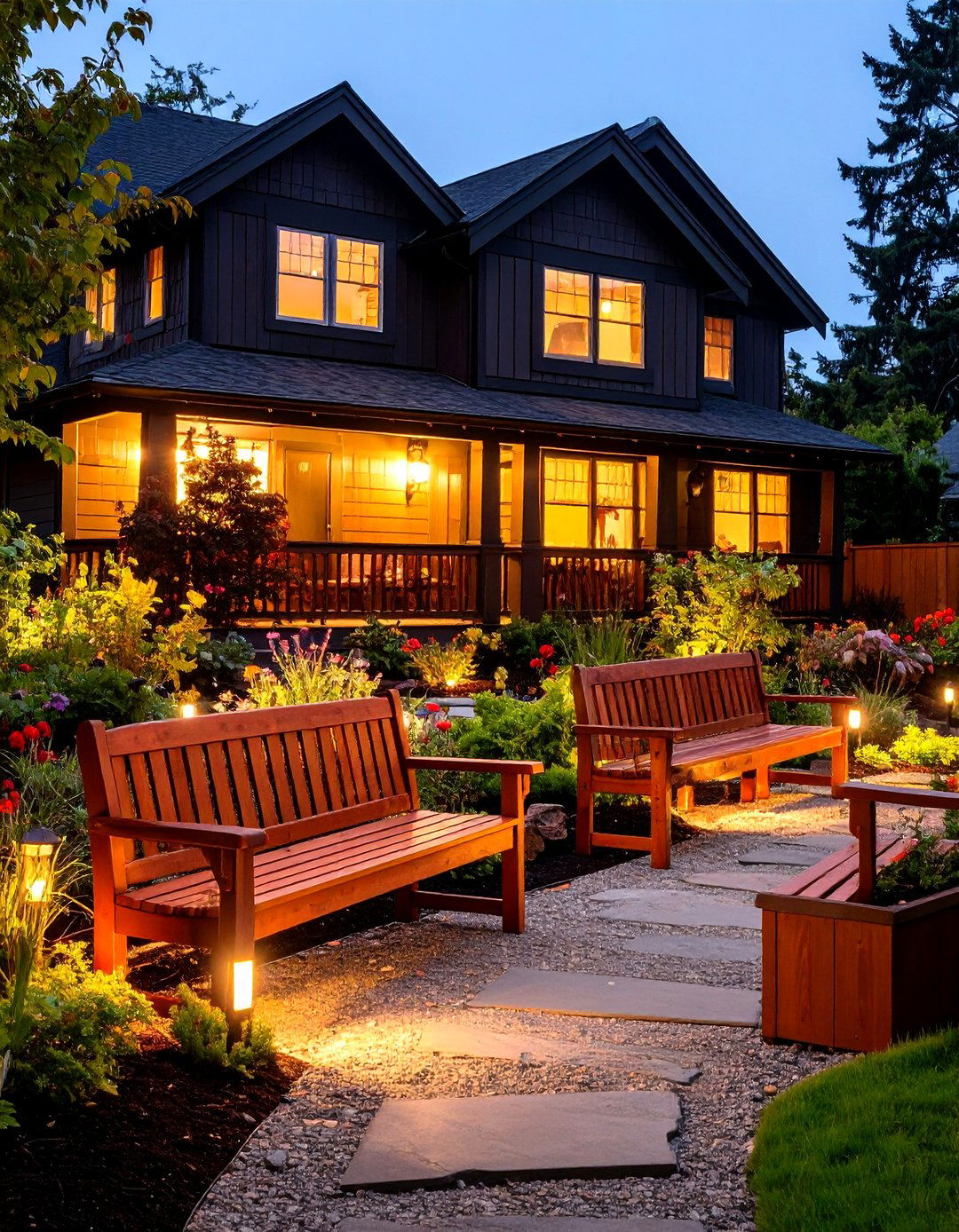
Extend cedar accents into the garden with benches, planter cubes, or pathway lights to root the black house within its landscape. Designers favor western red cedar for movable pieces because its rot resistance withstands soil contact and irrigation overspray. Place them in sightlines from key windows so warm wood draws the eye outward, blurring interior and exterior spaces—a technique modern garden guides celebrate for creating cohesive small lots. A quick yearly sand-and-oil refresh keeps everything looking intentional.
Conclusion:
Whether you lean toward a single cedar detail or a full symphony of warm wood, pairing a black house with cedar accents rewards you with enduring contrast, material honesty, and design flexibility. Cedar’s innate resistance to decay stabilizes the palette, while black paint or charred cladding supplies a stage that lets every knot and growth ring sing. Add rain-screen gaps, UV-stable finishes, and strategic shading, and even the thermal challenges of a dark façade become manageable—an effect energy consultants acknowledge and plan for. These twenty ideas show that a restrained palette can unlock architectural character for decades to come.


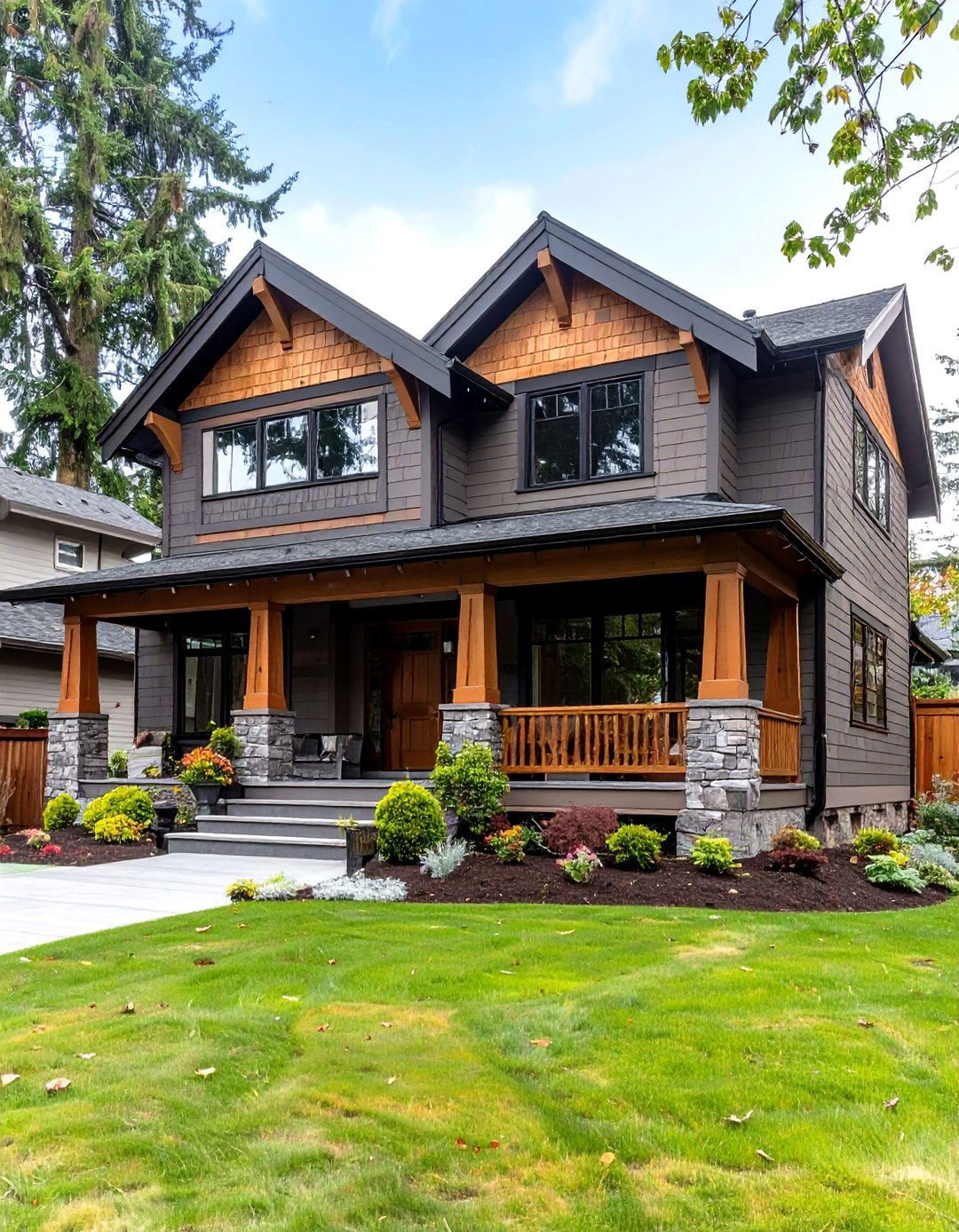

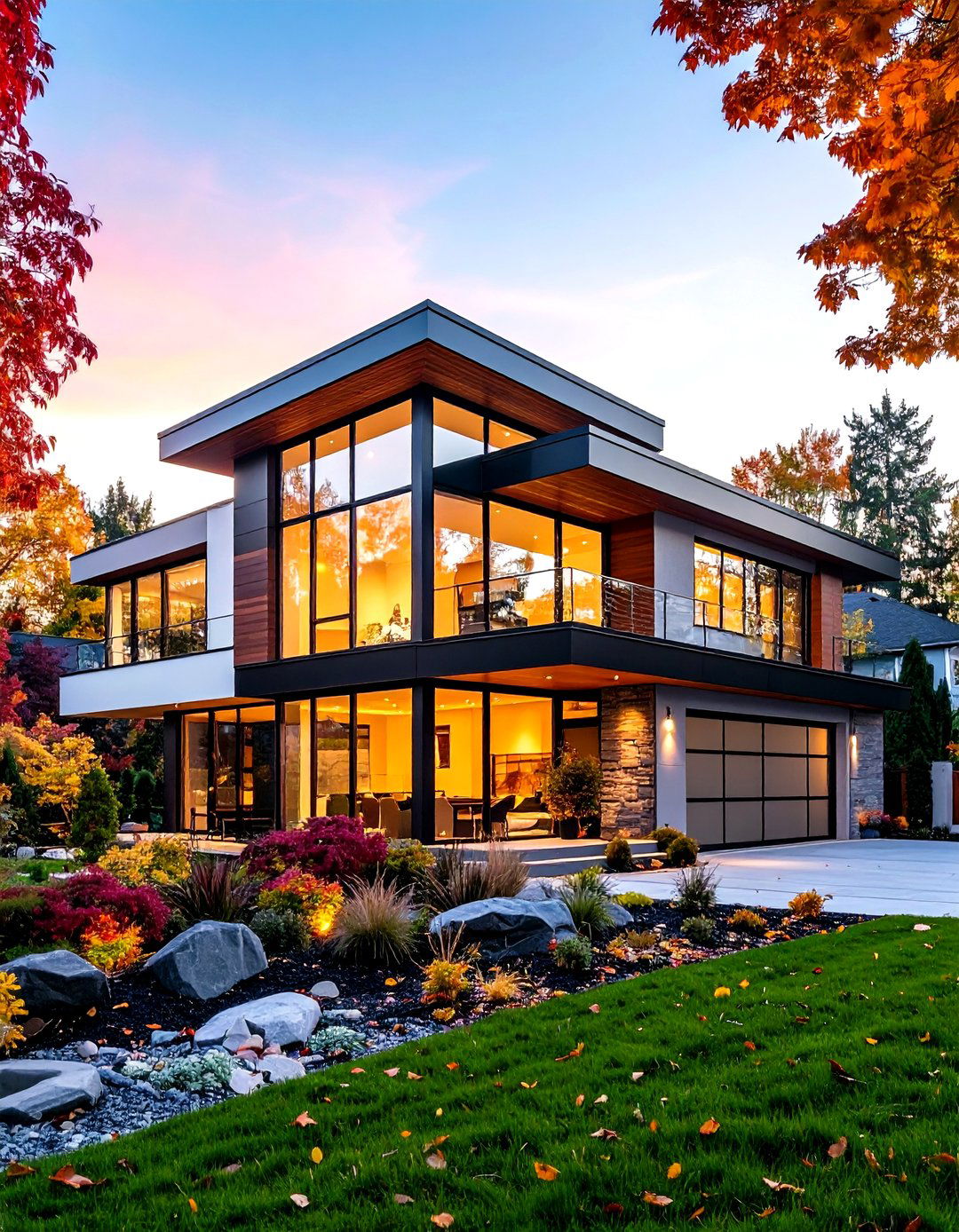
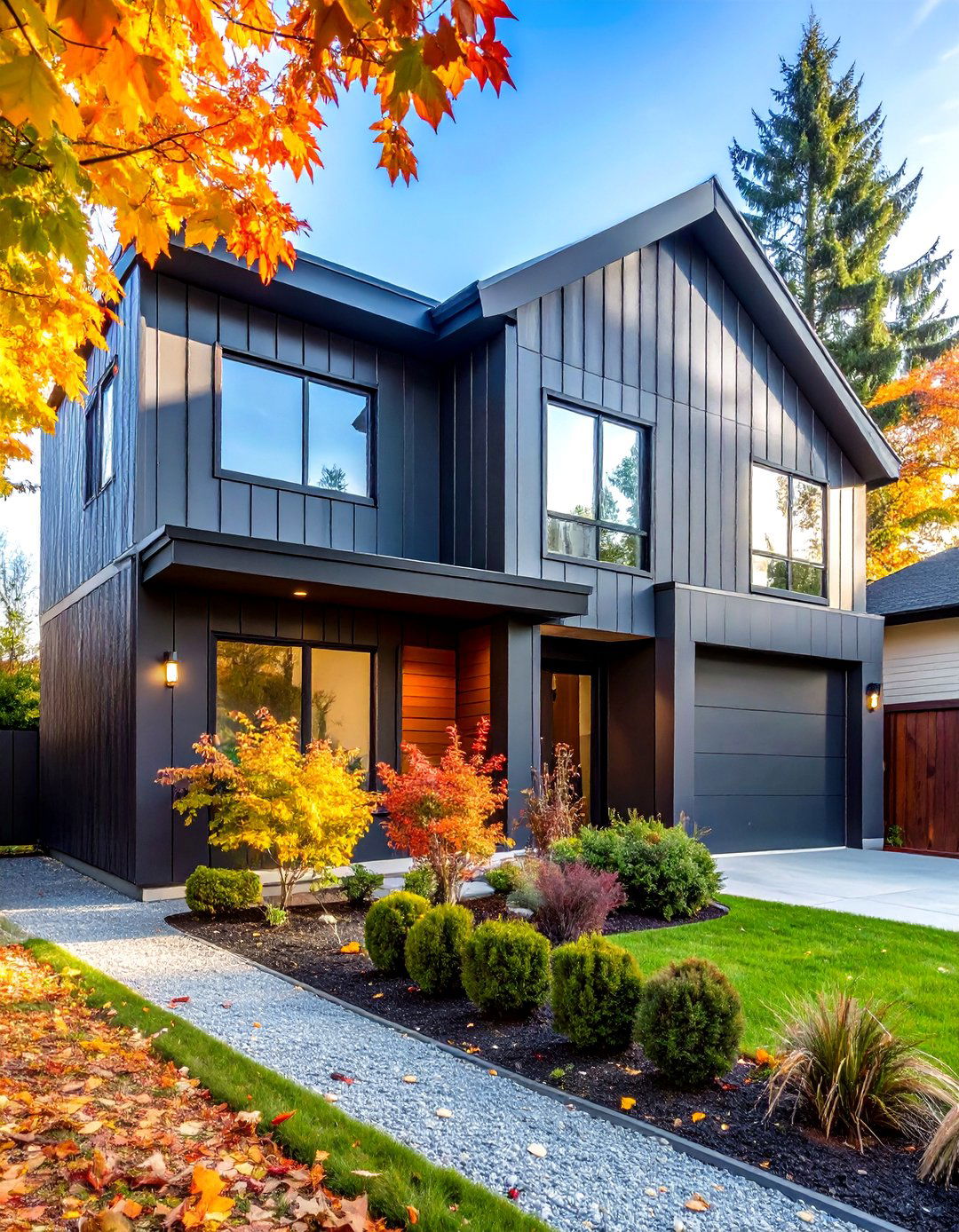
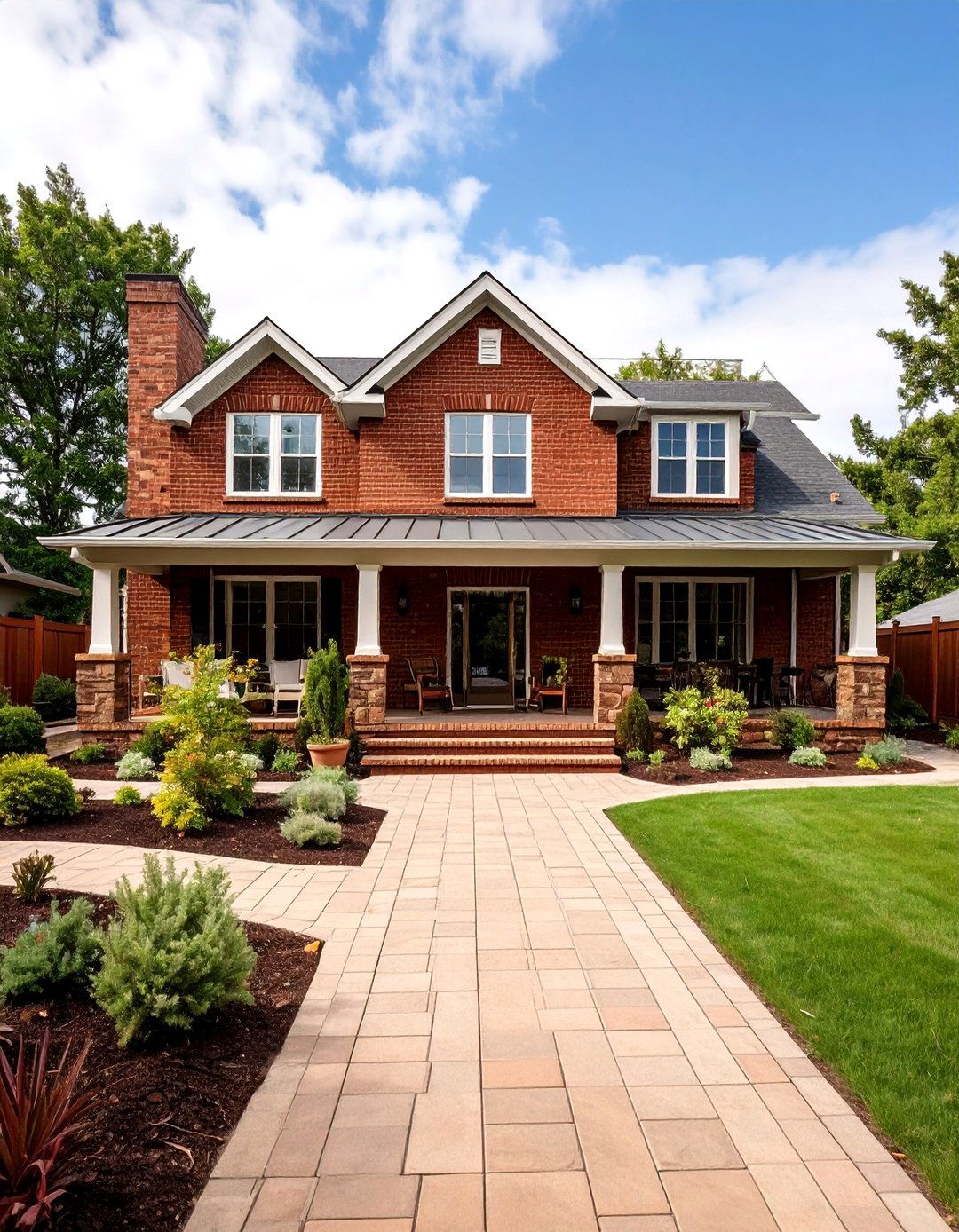
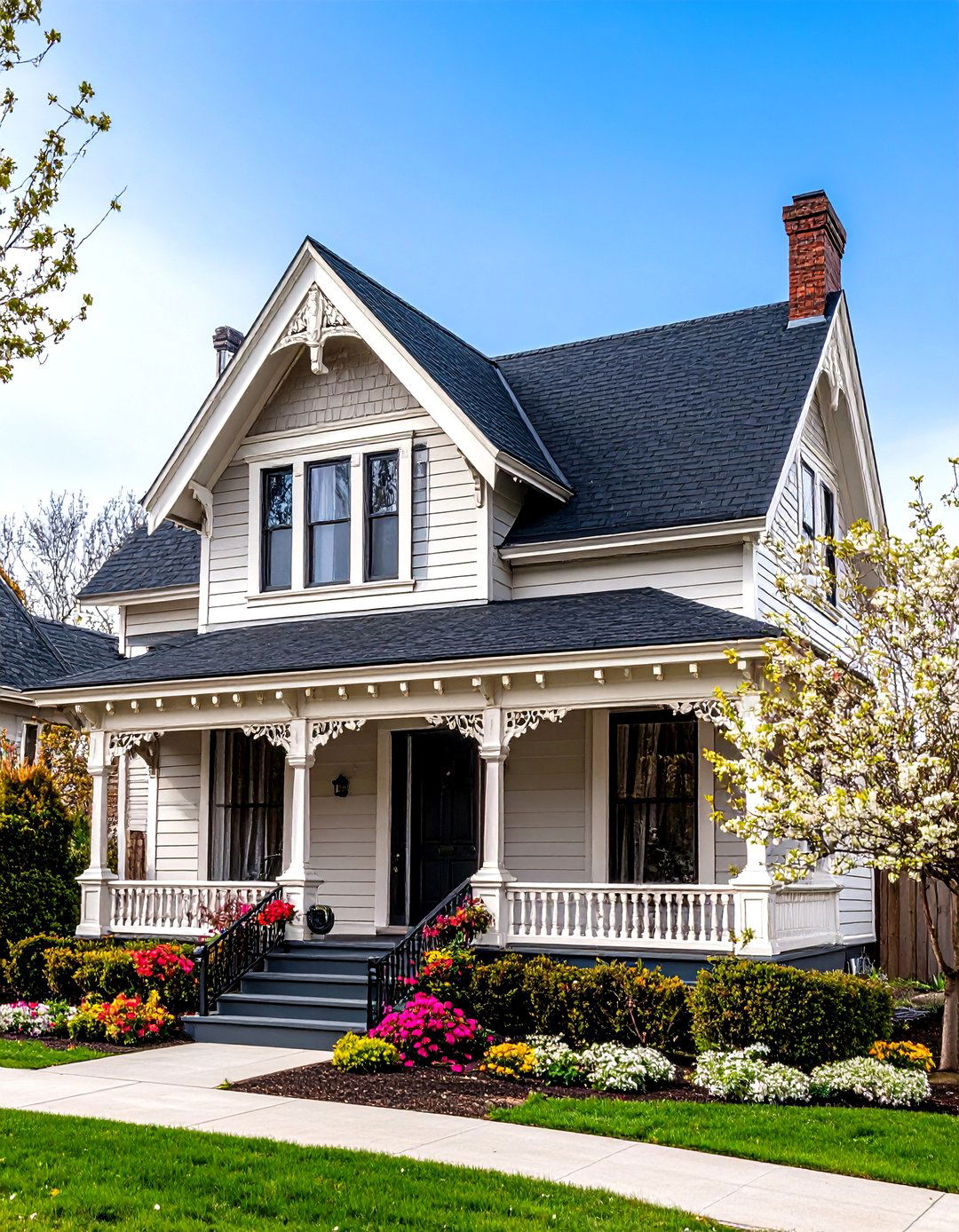
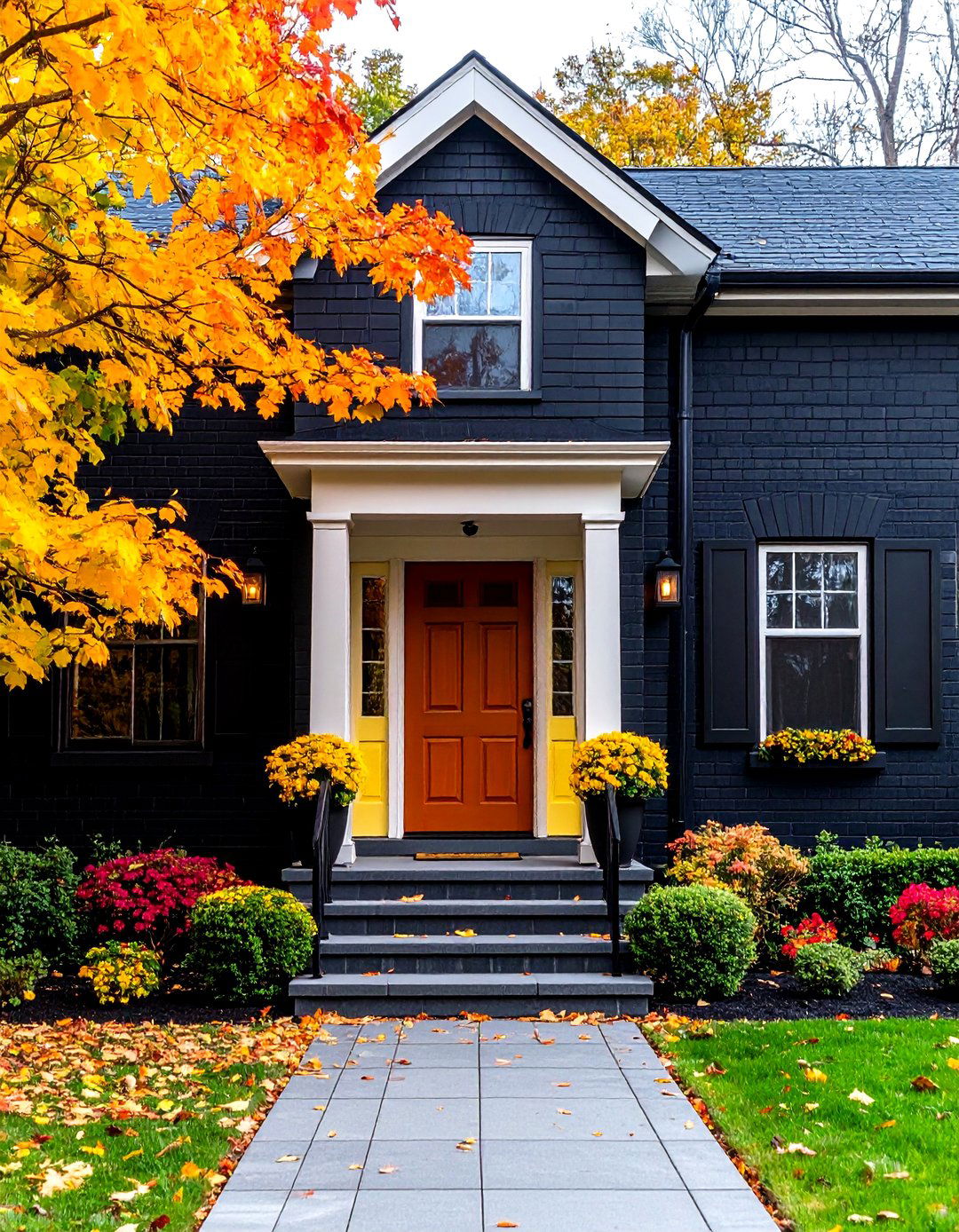
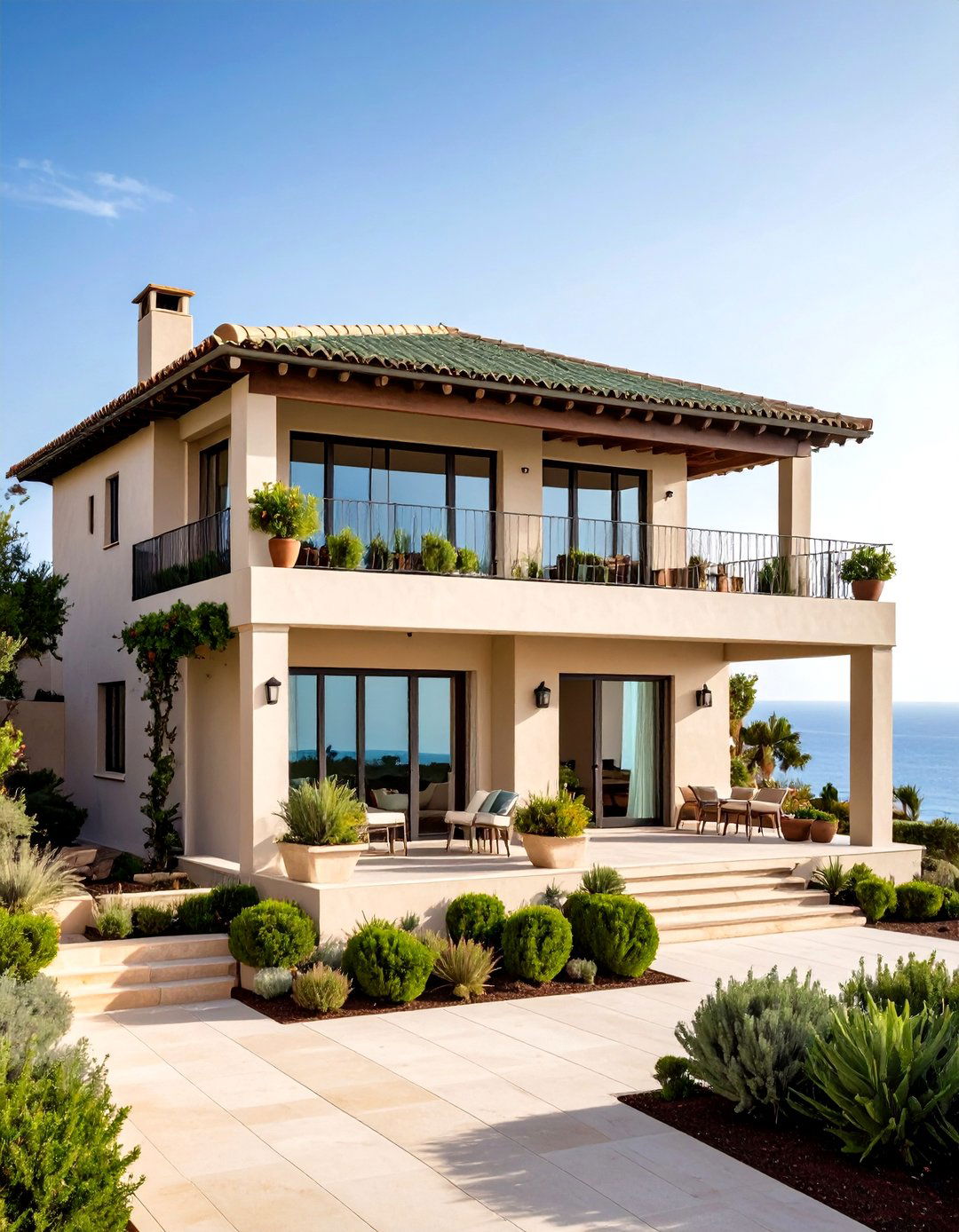
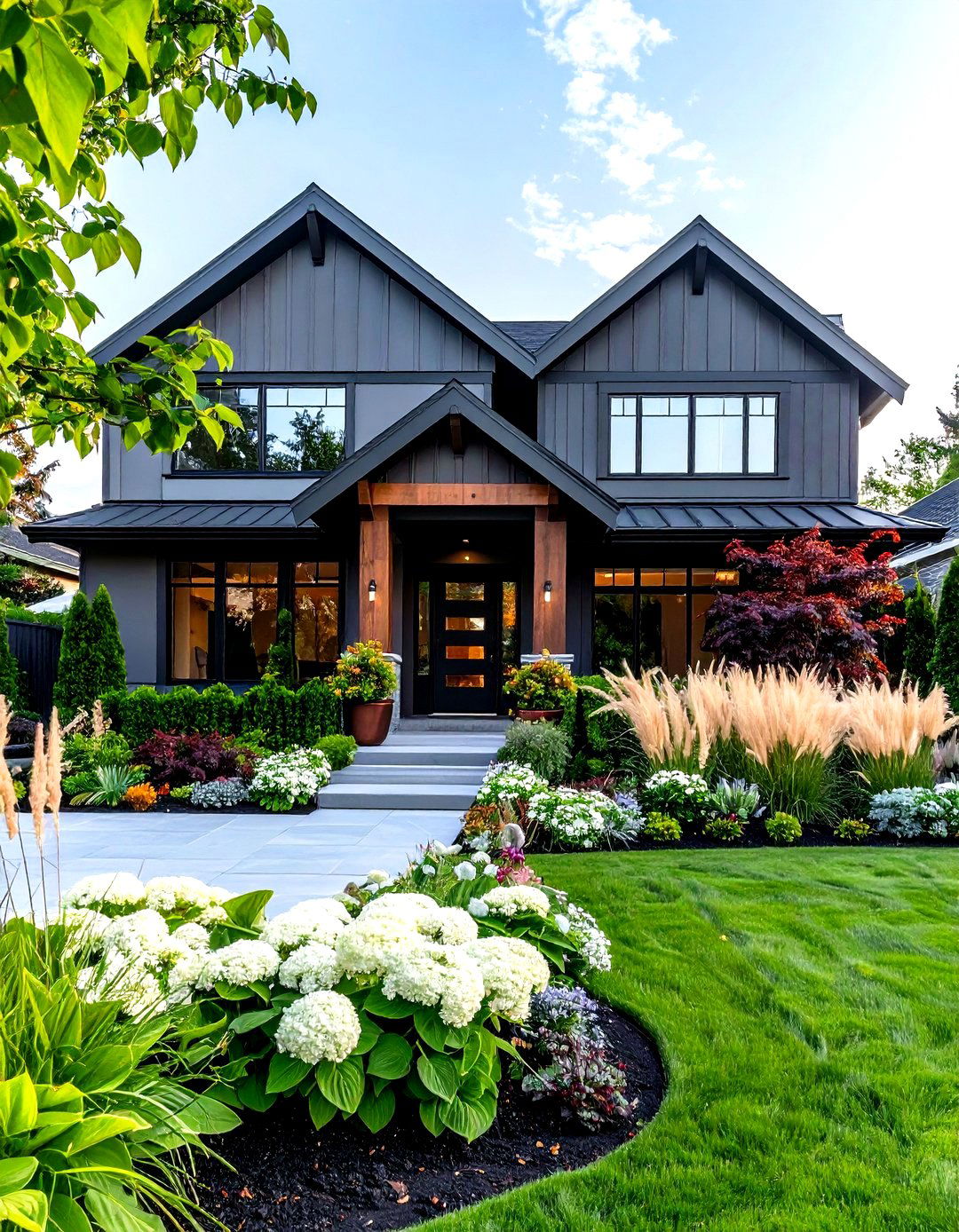
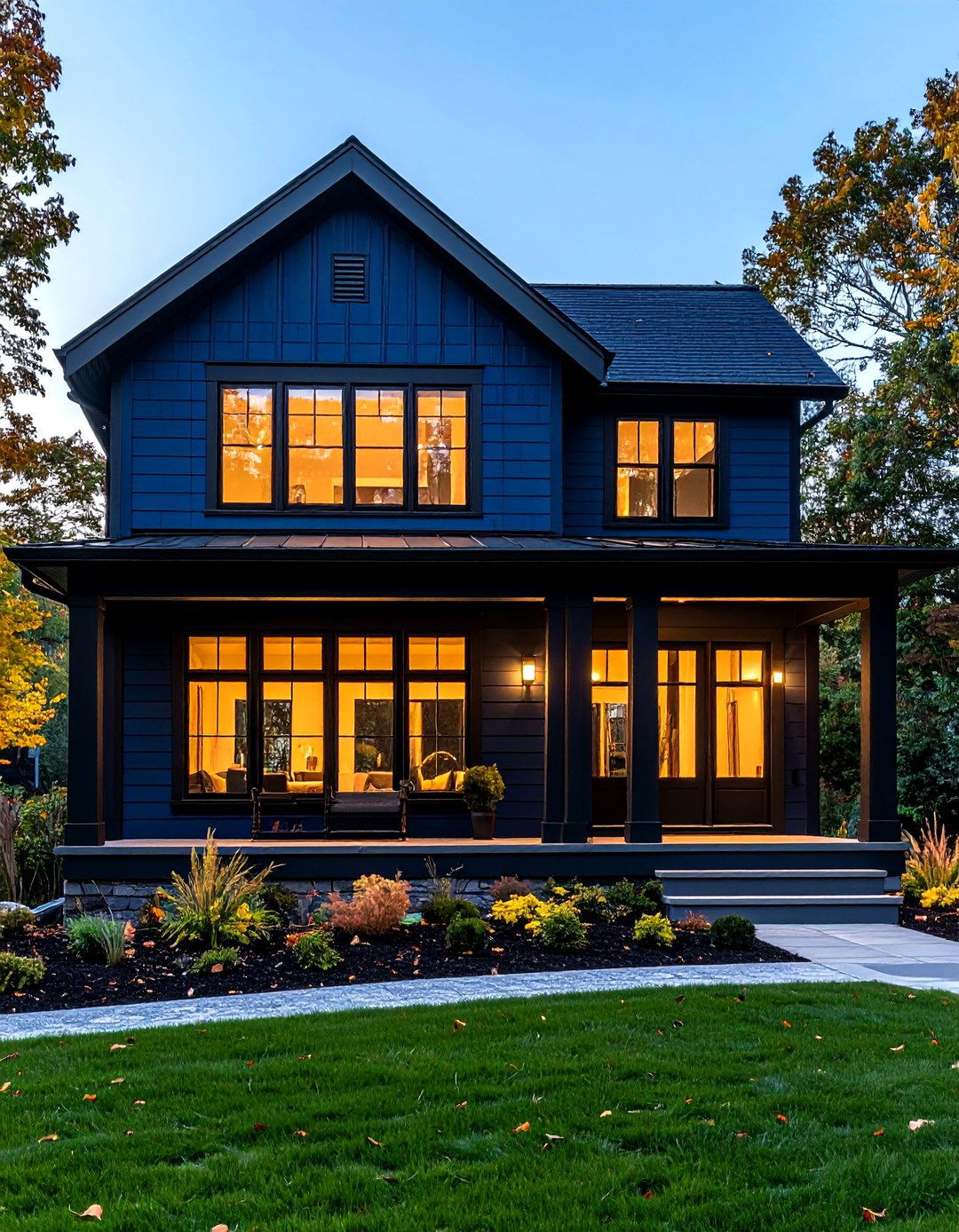
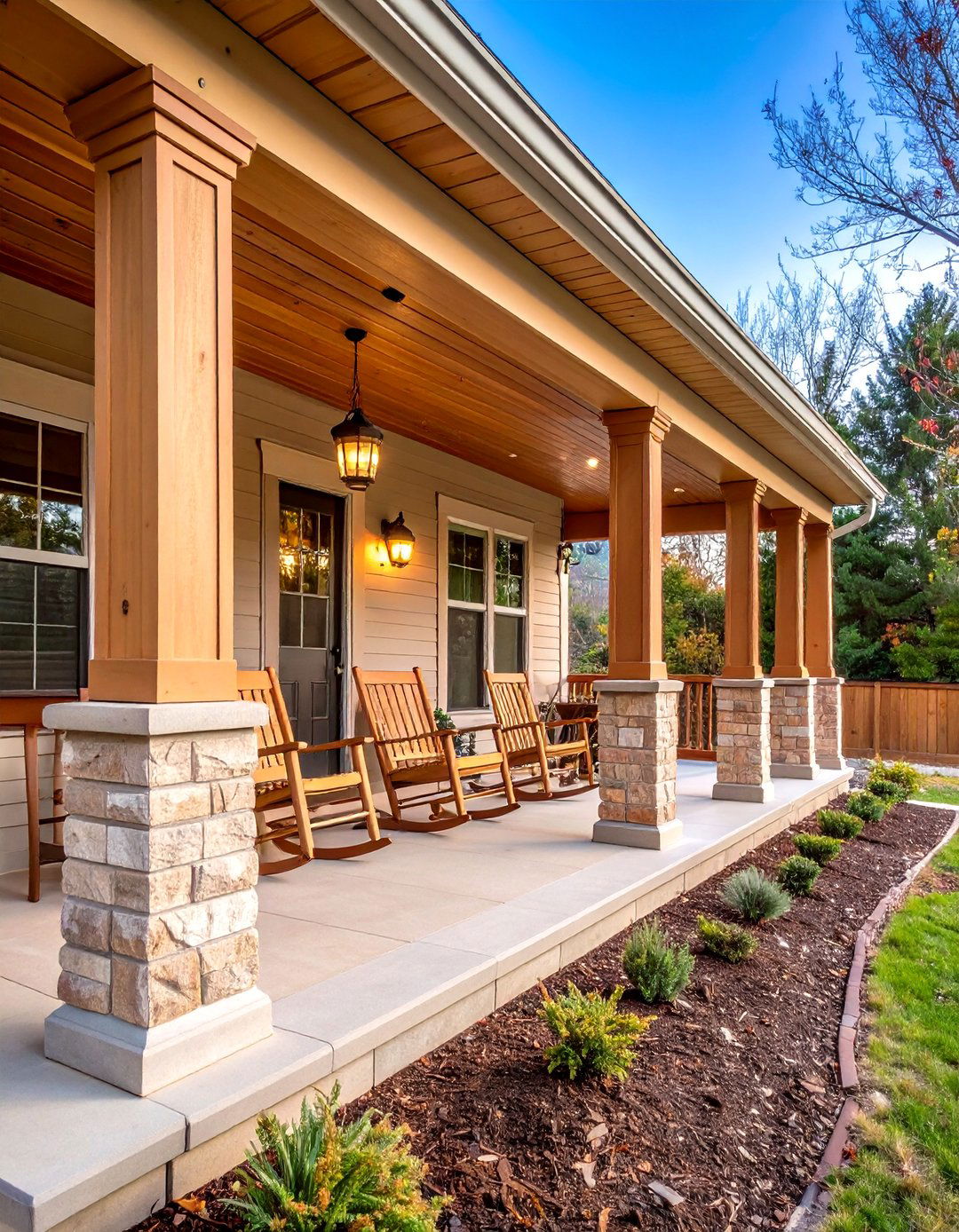
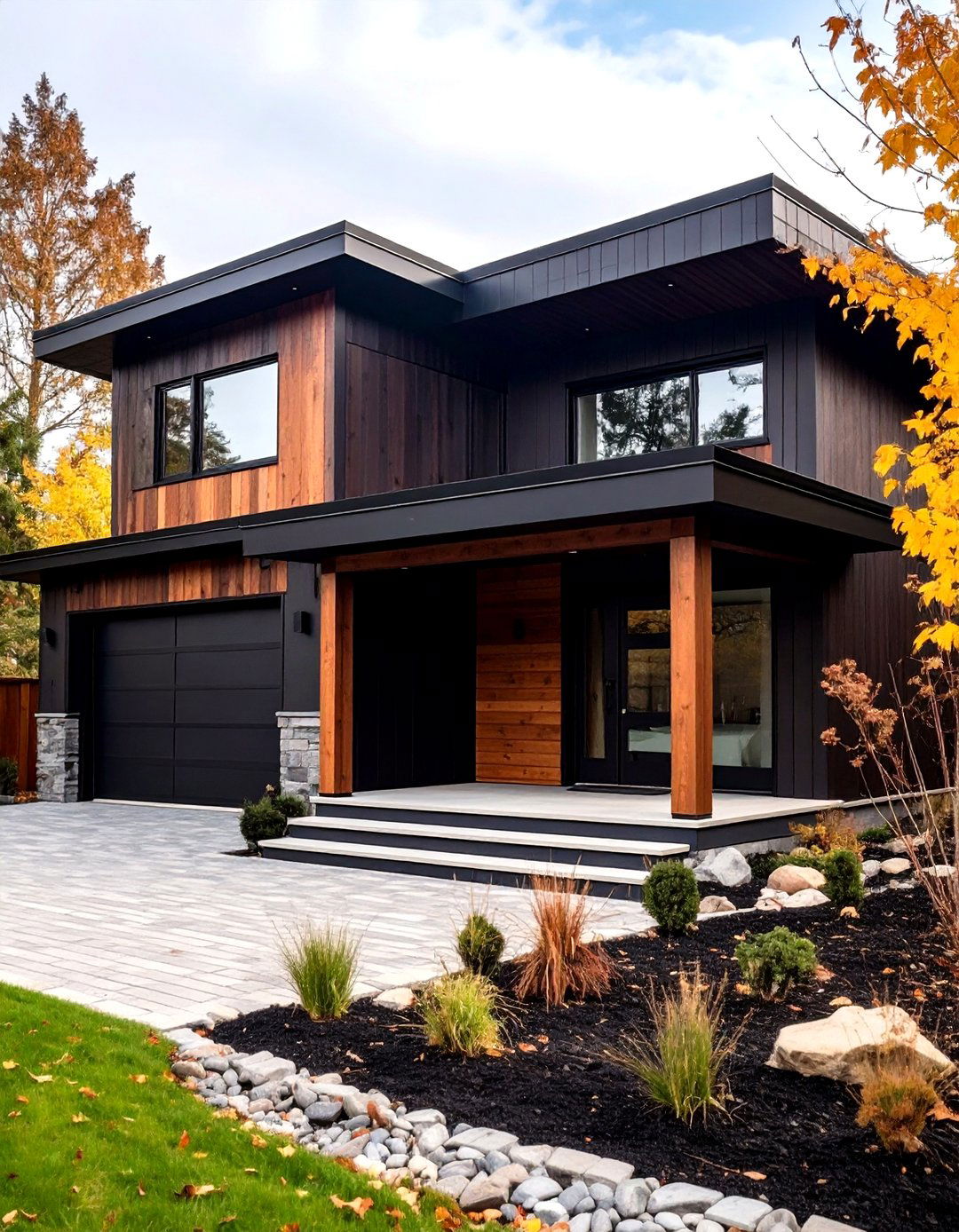
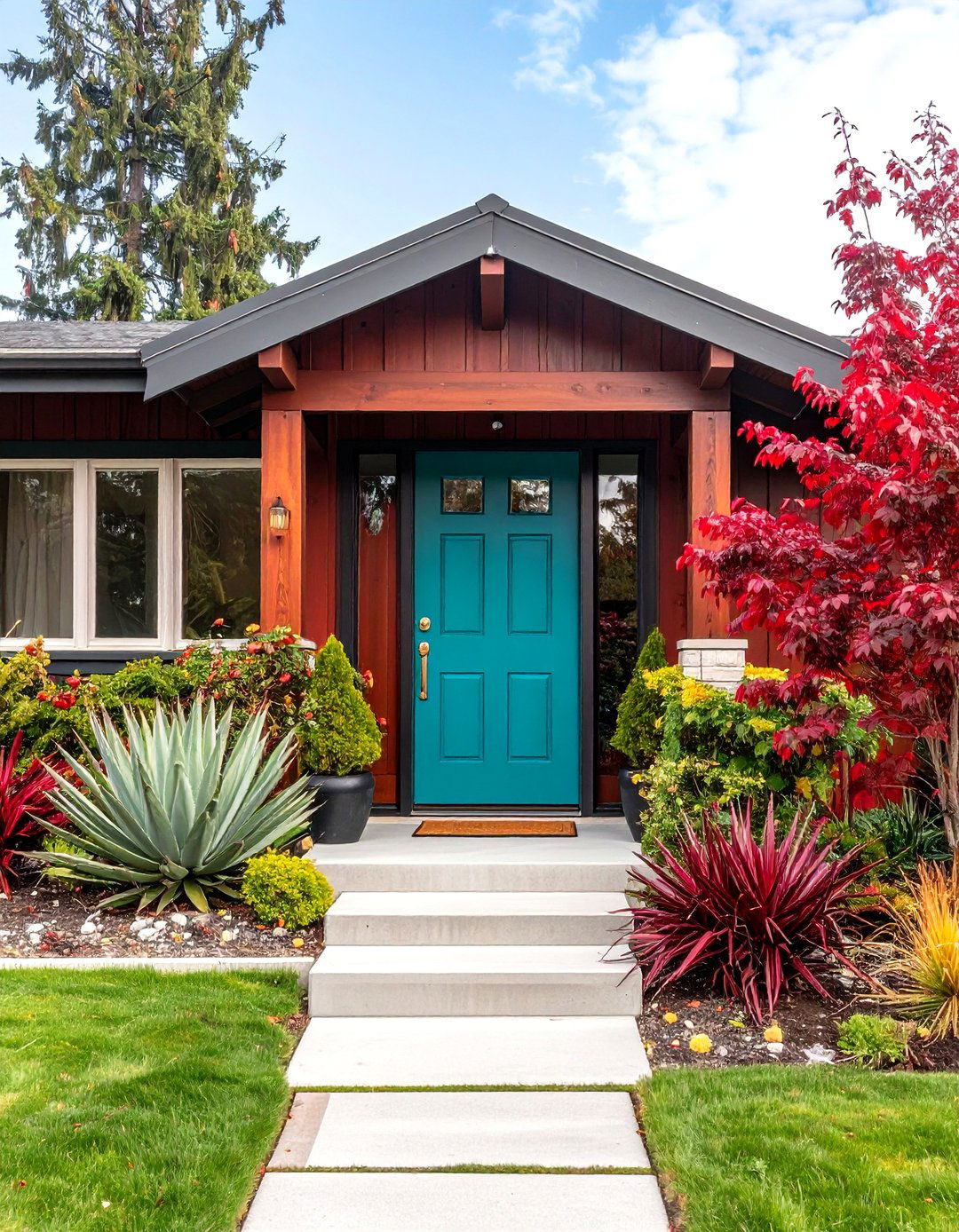
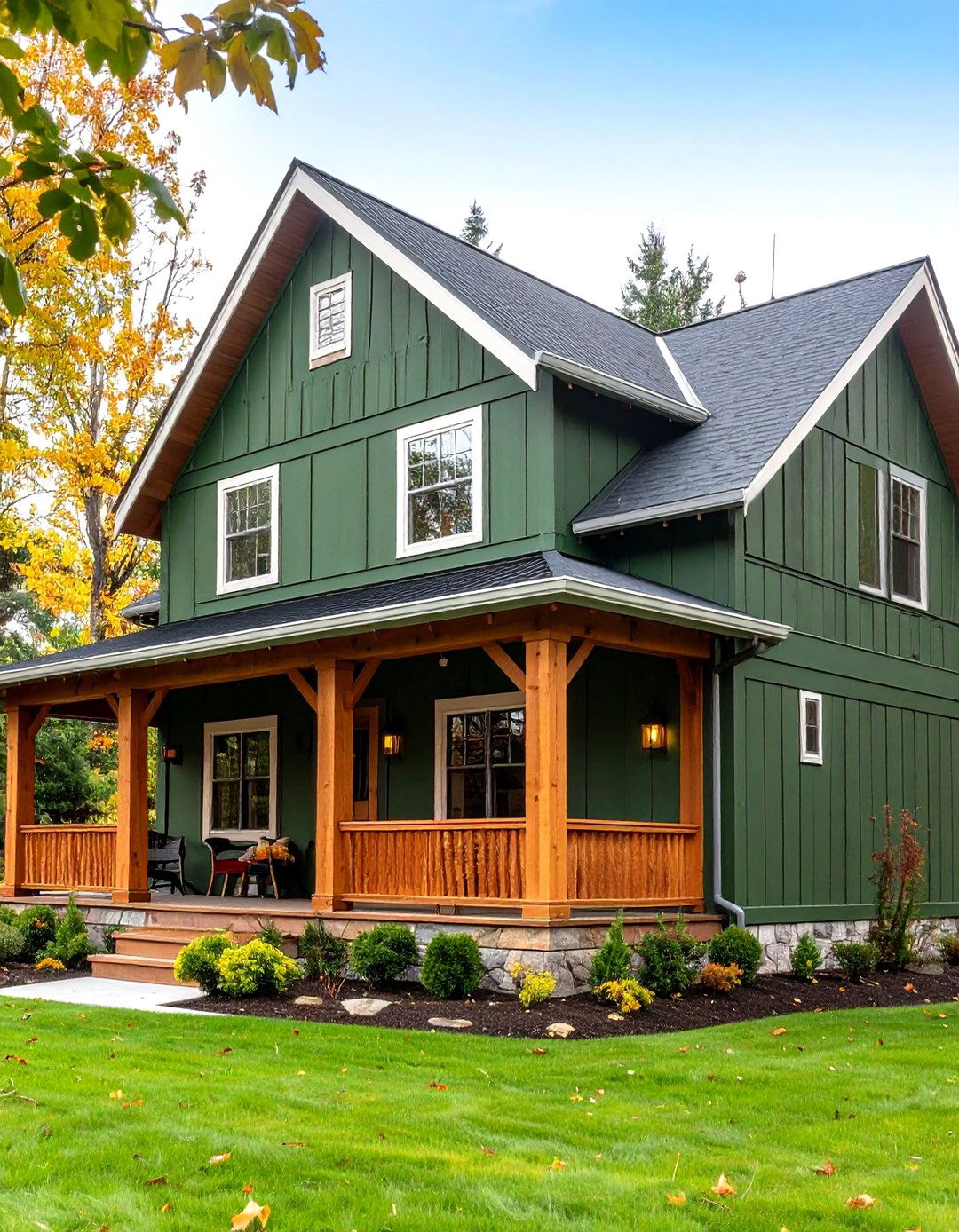

Leave a Reply